- Tourism Board
- Press & Media
- Azərbaycanca
- inspiring Azerbaijan
- interesting facts
- others about us
- publications
- sustainable Azerbaijan

Northern route
- North-western route
- Western route
- Southern route
- museums & galleries
- architecture
- crafts making
- heritage sites
- UNESCO heritage
- religious sites
- experience local gastronomy
- wineries in Azerbaijan
experience Baku's vibrant nightlife
- bazaar experience
- local designers
- national parks
- hiking in Azerbaijan
- adventure & outdoor activities
- birdwatching
- sport & adventure
- nature with kids
- culture with kids
- gastronomy with kids
- entertainment with kids
- medical tourism
- book flight & accommodation
- create your itinerary
- practical information
- Azerbaijan through the seasons
- tourist visa to Azerbaijan
- useful vocabulary
- tourist info points
- baku city tours
- event calendar
- 0 your favourites
- get inspired
- sustainability
- cities & destinations
- arts, culture and heritage
- food, drinks and nightlife
- nature & adventure
- family holidays
- health & wellness
- plan your trip
- good to know
enjoy the Caspian sea & beaches
From water sports to romantic afternoons and lively evening parties, the sandy Caspian beaches around Baku are great places to escape the hustle and bustle of the city.
enjoy the Caspian sea & beaches
- About sea & beaches
The shores of the Caspian Sea have plenty of excellent beach clubs to enjoy, from the Absheron Peninsula resorts easily reached from Baku to the water sports centre at Shuraabad. There, you will find the perfect conditions for learning to kitesurf on the scenic lagoon and once you’ve mastered the basics you can take your board out into the open Caspian. Both professionals and amateurs can take windsurfing sessions at some Baku beaches. However, if it’s tranquillity and romance you are seeking, make your way to less crowded beaches such as Bilgah, Mardakan, Pirshagi, Nardaran and Zagulba.
Enjoy the Caspian sea & its beaches
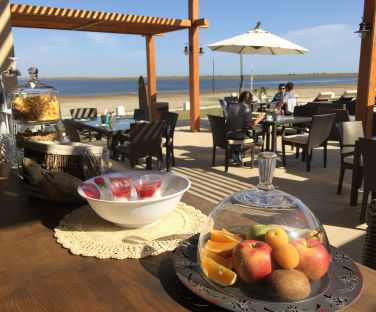
weather and season
Air temperature, feel temperature.
- Sunny and very warm
- speed 14.8 km/h
- Peak Season:
Caspian sea & beaches
- Bilgah Beach Hotel
- Dalga Beach Aquapark Resort
- Khazar Golden Beach
- Amburan Beach Club
- The Crescent Beach Hotel
- Sea Breeze Resort
other experiences in Baku
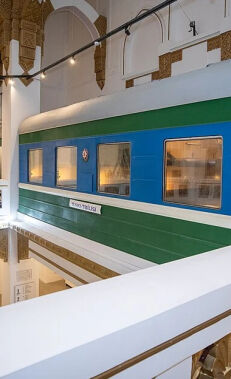
a journey into railway history
Centrally located near 28 May metro station, Azerbaijan Railway Museum offers visitors an opportunity to... More
Baku, Northern route
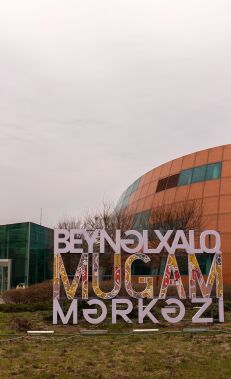
Azerbaijani mugham sanctuary of music
On the picturesque Baku Boulevard stands the International Mugham Center of Azerbaijan, a testament to... More
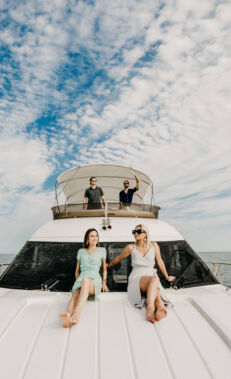
Across Caspian expanses with Premium Yachting Baku
The thrilling sensation of relaxing on the water is truly unforgettable. But the only way... More

traditions of the East with a modern twist
Nestled in the heart of Baku, Sharg Bazaar stands as a striking emblem of Azerbaijan's... More

a palace to happiness recounts a history of love
In the vibrant heart of Baku stands the Palace of Happiness, a beautiful building with... More

From oil innovation to artistic creation
The echoes of a rich oil heritage resonate through the settlements of Balakhani and Bibi-Heybat.... More

Kamil Aliyev carpets shine with weaving mastery
“Art will never disappear as long as every artist, every professional, no matter their field... More

Hit the bull’s eye at Baku Shooting Center
Baku Shooting Center waits for those who are used to always hit the target in... More
Relax your body and mind at the Hamambath Wellness & Spa Complex
The hammam is a symbol of cleanliness, purity and wellbeing in Eastern culture. A visit... More
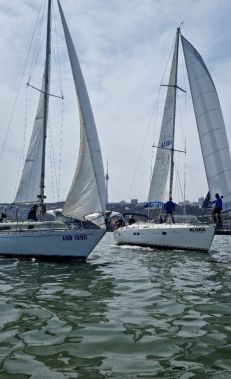
Take a yacht trip on the blue Caspian
Go for a sail on the Caspian Sea and have a wonderful time with your... More

In the abode of flames an exciting adventure
Yanardag (the Burning Mountain) is one of Azerbaijan’s most famous sights, home to natural flames... More

Birdwatching in Absheron National Park
Birders who visit this remote part of the Absheron Peninsula will be rewarded with sightings... More

House-museum of Gara Garayev
A visit to the house-museum of Gara Garayev, one of the most prominent representatives of... More

The jazz world of Vagif Mustafazade
A visit to the house museum of Vagif Mustafazade, whose music and magnificent performances are... More

Discover the literary heritage of Magsud Ibrahimbayov
Magsud Ibrahimbayov (1935-2016) was an honoured Azerbaijani writer and public figure who authored numerous popular... More
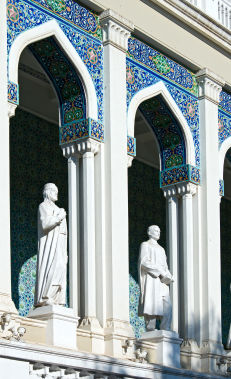
Take a journey through Azerbaijan’s literary history
Azerbaijan has created some of the most beautiful examples of Oriental literature in different periods... More
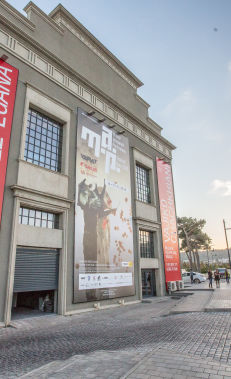
Immerse yourself in art on the Caspian shoreline
Constantly in search of new trends, Azerbaijan’s contemporary artists are increasingly attracting attention for their... More
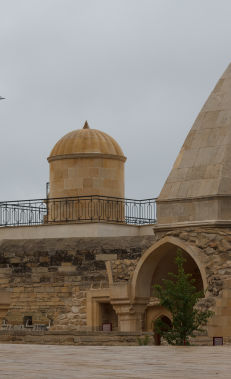
Ali and Nino - walking tour of Baku
This tour will take you to the places where the events in the novel "Ali and... More

Prominent people of Baku
Take a cultural tour of Baku to learn about prominent artists and musicians who left... More
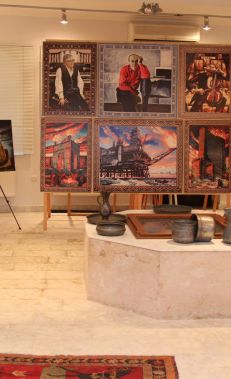
Tahir Salahov’s world of colors
As you walk through the narrow streets of the Old City, you can come across... More
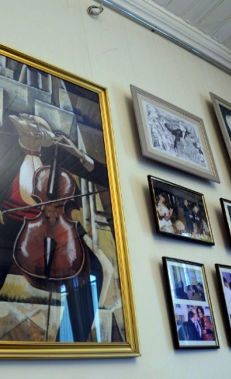
House-museum of genius musicians
Mstislav Rostropovich, a world-famous musician and genius cellist, holds a special place among the prominent... More

Nobel brothers’ house-museum
By visiting the former Baku residence of the Nobel brothers, who made an exceptional contribution... More
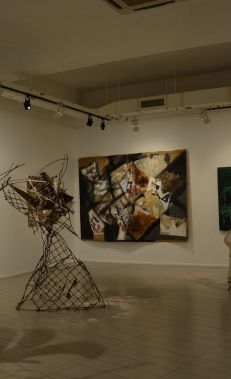
Modern art in ancient city
Azerbaijan’s representatives of fine arts and sculpture, distinguished by their original works, are also well-known... More
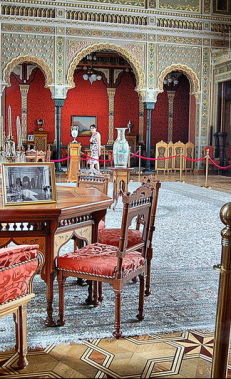
The National Museum of History of Azerbaijan
The National Museum of History of Azerbaijan is incomparably important in terms of protection and... More
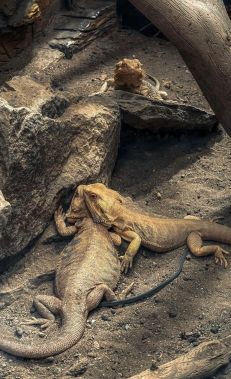
Exciting wildlife in the city center
Without leaving the city center, you can find yourself in the animal world by visiting... More

Take a walking tour of Soviet films shot in Baku
Baku has always stood out for its international character, blending harmoniously elements of East and... More
Visit the world’s first oil tanker museum
Did you know that the world's first oil tanker was put into operation in Baku... More

Fun for everyone at the Baku circus
Professional circus shows first appeared in Azerbaijan in the late 19th century. Today, at the... More

Baku Olympic Stadium
The architecture of Baku never ceases to amaze. You’ll be convinced of this yourself after... More
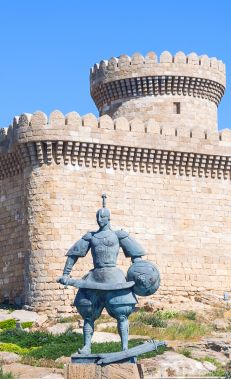
Gala State Historical and Ethnographic Reserve
If you want to see ancient ruins, a medieval town of the Absheron Peninsula and... More
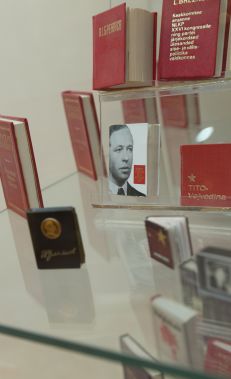
The Museum of Miniature Books
In Baku there’s an unusual museum whose exhibits fit easily into the palm of your... More

Polish heritage in Baku
In the central streets of Baku there are dozens of stunning European-style buildings built during... More
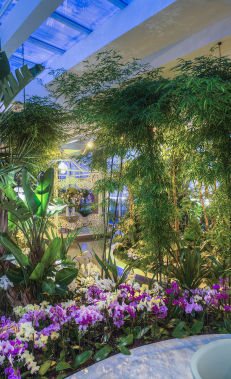
Relax and have fun at Zire Ecopark
The modern cultural centre and ecopark in the Baku village of Zire offers dozens of... More

Shop and socialise in the Port Baku area
If you love going out to eat or shop and are looking for an upmarket... More
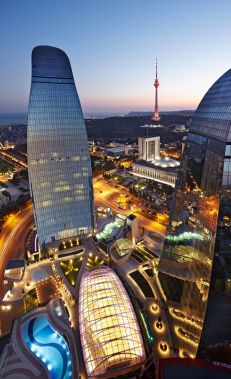
Snap a photo of the Flame Towers
The trio of skyscrapers named the Flame Towers are one of the top architectural wonders... More
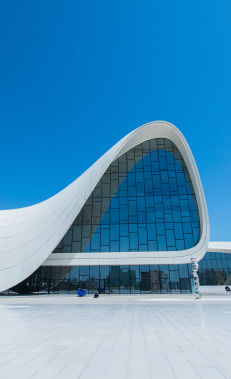
Admire the curves and collections of the Heydar Aliyev Centre
Explore the wide range of art collections and exhibitions of the Heydar Aliyev Centre, then... More
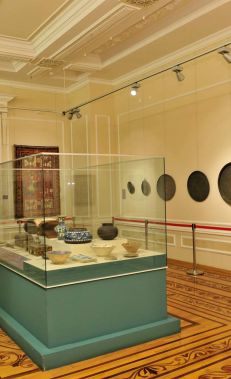
Browse the home of Azerbaijani fine arts
Discover an oil-boom mansion packed with a wealth of art spanning multiple centuries and geographic... More

Take a wine bar crawl
Baku's growing number of wine bars are a great place to soak up the local... More

Visit Yashil Bazaar for a world of aromas
Baku's Yashil Bazaar is one of the largest food bazaars in the Caucasus. Enter it... More

Gutab-making masterclasses
In Baku, particularly in Icherisheher (Old City), an array of national restaurants offers impromptu demonstrations... More
.jpg)
Horse riding in Baku
Horse riding is a truly royal experience Baku can offer. Spend an active and unforgettable... More
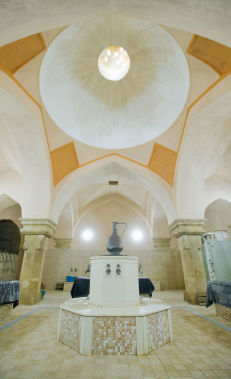
Relax at Baku’s traditional hammams
Discover centuries-old hammams like Agha Mikayil, Agha Zeynal, and Tezebay to rejuvenate in the traditional... More

Uncover Jewish traces in Baku
Since the early 1800s, Baku has been home to a vibrant community of Jews. Explore... More

Explore Baku's mud volcanoes
Discover why the landscape around Baku is fulfilled by mud volcanoes, how are they formed... More

Discover Gobustan's ancient rock art
Uncover an astonishing collection of over 6,000 ancient petroglyphs charting ways of life dating back... More

Learn the legacy of ancient fire worshippers
Discover the incredible story of Azerbaijan’s ancient fire worshippers. Visit the Ateshgah Fire Temple and... More

Baku is the perfect city for a night out, dance the night away and enjoy... More

Dining in Baku
Baku offers a wide variety of restaurants and bars, from the traditional options to the... More
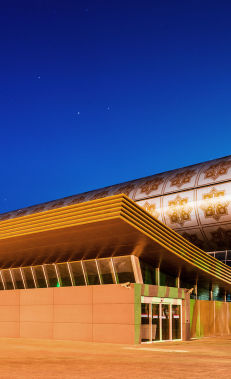
Visit Baku's Carpet Museum
Situated on Baku's Seaside Boulevard, the Carpet Museum is home to the world’s largest collection... More

Play golf in Baku
What more can a golf lover ask for than a challenging course and stunning scenery?... More

Shopping: boutiques & bazaars in Baku
Baku has the perfect combination of international shops, fashion boutiques and traditional stores and bazaars.... More
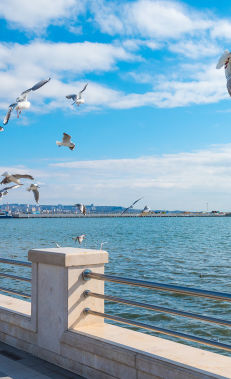
Stroll along Caspian seaside boulevard
To soak up Baku’s relaxed seaside atmosphere, take a stroll along the beloved Boulevard. Founded... More

take a walking tour of Baku’s oil-boom architecture
Discover the stunning old architecture built in Baku during the late 19th century, early 20th... More

Explore Baku's Old City
A city within a city, the Old City is Baku's historic core and a UNESCO... More
read more about region and route
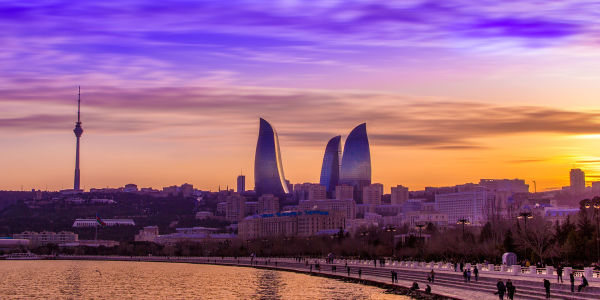
Discover Baku, a truly contemporary city criss-crossed by history. From the modern elegance of the Flame Towers to the medieval old city full of life. More
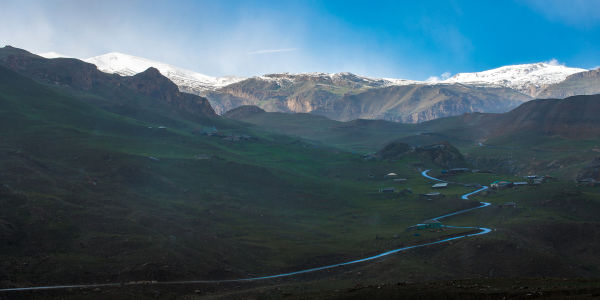
This route leads from Azerbaijan’s buzzing capital along the Caspian Sea coast and into the heart of the Caucasus Mountains. Expect outdoor adventures such as hiking, kitesurfing and paragliding, culinary surprises and some of the best scenery anywhere in the Caucasus. More
Azerbaijan right now #ExperienceAzerbaijan
Subscribe to our newsletter.
We use cookies to improve your user experience. By using our website, you will be providing your consent to our use of cookies. To find out more, click here.
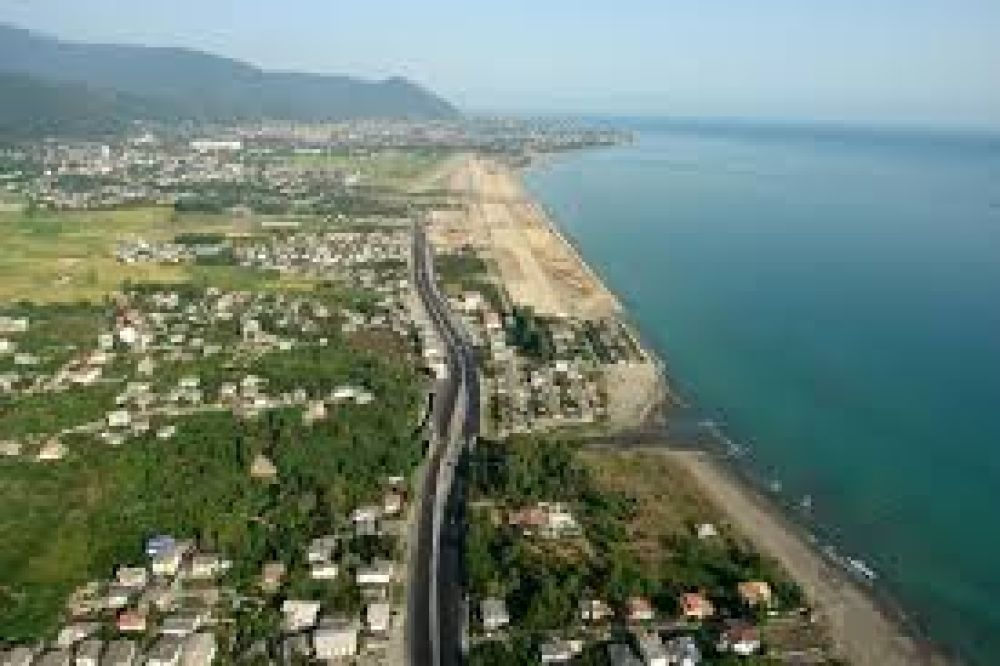
Caspian Sea Beaches Tourism
- Caspian Sea Beaches
- Things to do
- Best time to visit
- How to Reach
- Tourist Map
- within 25kms
- within 50kms
- within 100kms
- within 150kms
- within 200kms
- within 250kms
- within 300kms
- within 500kms
Explore Places to Visit Near Caspian Sea Beaches by Type
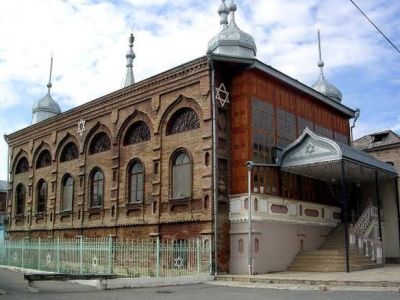
Other Suggested Reads for Caspian Sea Beaches
- Things to do in Caspian Sea Beaches
- How to Reach Caspian Sea Beaches
- Best time to Visit in Caspian Sea Beaches
- Caspian Sea Beaches Tourism History
- Food in Caspian Sea Beaches
- FAQS about Caspian Sea Beaches
- Caspian Sea Beaches Tourist Map
Young Pioneer Tours

How to travel on the Caspian Sea Ferry – Ultimate 2024 Guide
When it comes to bodies of water not many are stranger than the Caspian Sea. In fact not an actual sea, but the largest inbound body of water in the world, it acts as a lifeblood for many people in Central Asia, from food, to trade and yes travel.
The Caspian Sea Ferry routes are not only extremely important, but also a great thing to add to a tour in Central Asia.
Which countries border the Caspian Sea?
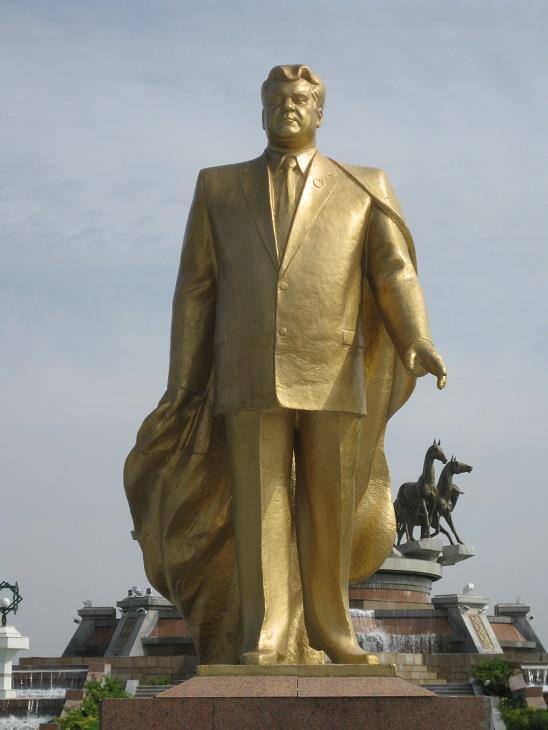
In Soviet Times this was a very easy question to answer as it was essentially two, the Soviet Union and Iran. This made this an extremely important trade and diplomatic gateway, particularly during the time of the Shah in Iran.
Since the dissolution of the Soviet Union things have changed a bit, with the old constituent countries of Azerbaijan, Turkmenistan, Kazakhstan and the Russian Federation all having Caspian Sea Access. This also means many more routes on the Caspian Sea Ferry!
Caspian Sea Ferry Routes
In this article we will detail the man Caspian Sea Ferry Routes, as well as the towns they pertain to. The main routes currently consist of Turkmenistan – Azerbaijan, Kazakhstan to Azerbaijan, Turkmenistan to Russia and tentative plans to add Iran to Kazakhstan to Russia and Iran, although these are theoretical as we head through 2024
Taking the Caspian Ferry from Kazakstan to Azerbaijan and back
From the Kazakh side the ferry leaves from the dreary port town of Kuryk. It previously left and arrived from Aktou! Keep this in mind if you read otherwise as there is often outdated information out there
Getting here from Aktou takes a few hours and should cost about $25 (although this is subject to change. Kuryk Port is not to be confused with the town of the same name which is 30, or so kilmoters away – make sure you driver knows this to avoid any heartache.
Kuryk port is what you might call a one horse town, or at least a one hotel town, but the hotel is decent and cheap and there are money changers as well as great street food available.
The ferry ride from Kuryk to Alat (and back) takes 27, or mroe hours and leaves 405 times a week. This is not a ferry to reply on if you are in a rush.
Price wise it is $80 for a passenger ticket, $10 extra for a bike and a massive $300 for a car. Customs immigration and disembarkation can take a whopping 5 hours on the Kazakh side – you have ben warned!
The Azeri side and Alat is slightly more chilled with more options for eating drinking and sleeping.
Caspian Ferry from Turkmenistan to Azerbaijan!
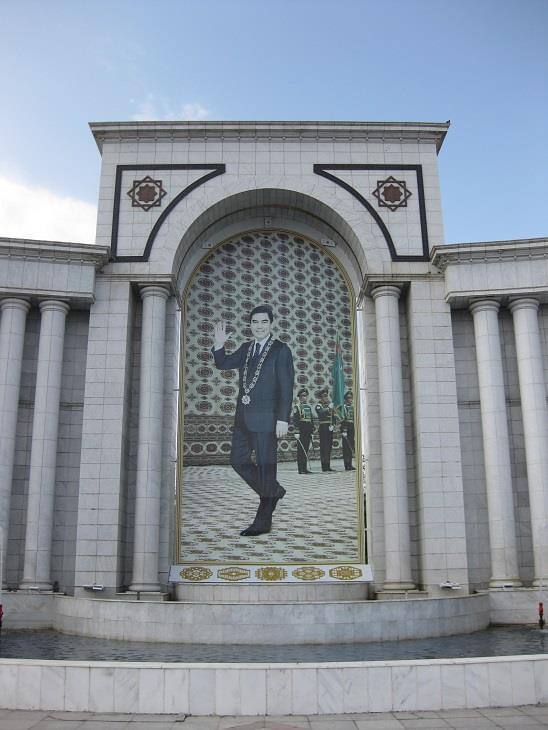
One of the most exciting Caspian very routes, but also one rather contingent on Turkmenistan opening to tourism, something it has yet to do despite its report of zero Covid cases.
To read about zero Covid in Turkmenistan click here .
When it does run though you are in for a treat. The most popular and common Caspian Ferry route is between Turkmenbashy in Turkmenistan and Alat in Azerbaijan – the same Alat that you go by ferry from Kazakhstan.
Turkmenbashy needs scants introduction and is the town famously named after the previous glorious ruler of Turkmenistan. While no metropolis there is plenty to do here as you wait for your Caspian Sea Ferry!
Alat is also bustling port town and has enough to look after a weary traveler, as well as even a place to pitch a tent! These ferries after all not having the reputation for reliability.
Technically at least they are supposed to leave every 2 days, although more so in busy times. The reality is that this is very much subject to change, as we have found in other parts of the old Soviet Union, such as with the Sakhalin Ferry.
To read about Sakhalin click here .
Price wise tickets are $300 per person, $110 for a motorbike and $80 per person. Keep in mind that these prices can change dramatically with currency fluctuations.
Officially tickets can be booked from the following website – but as with most things, don’t hold out too much hope of it working.
On the Turkmenistan side (when it is open) Turkmenbashy is one of the best town you can wait in, with the buildings made of marble and the port itself shaped like an anchor, all in with keeping withe weird ascetics that make Turkmenistan so unique.
On both sides of the water you will have to wait for the ferry to be full before leaving, so again do not use the ferry if you are in a rush. There are sorry stories of people waiting weeks, not days.
Caspian Ferries from Russia and Iran
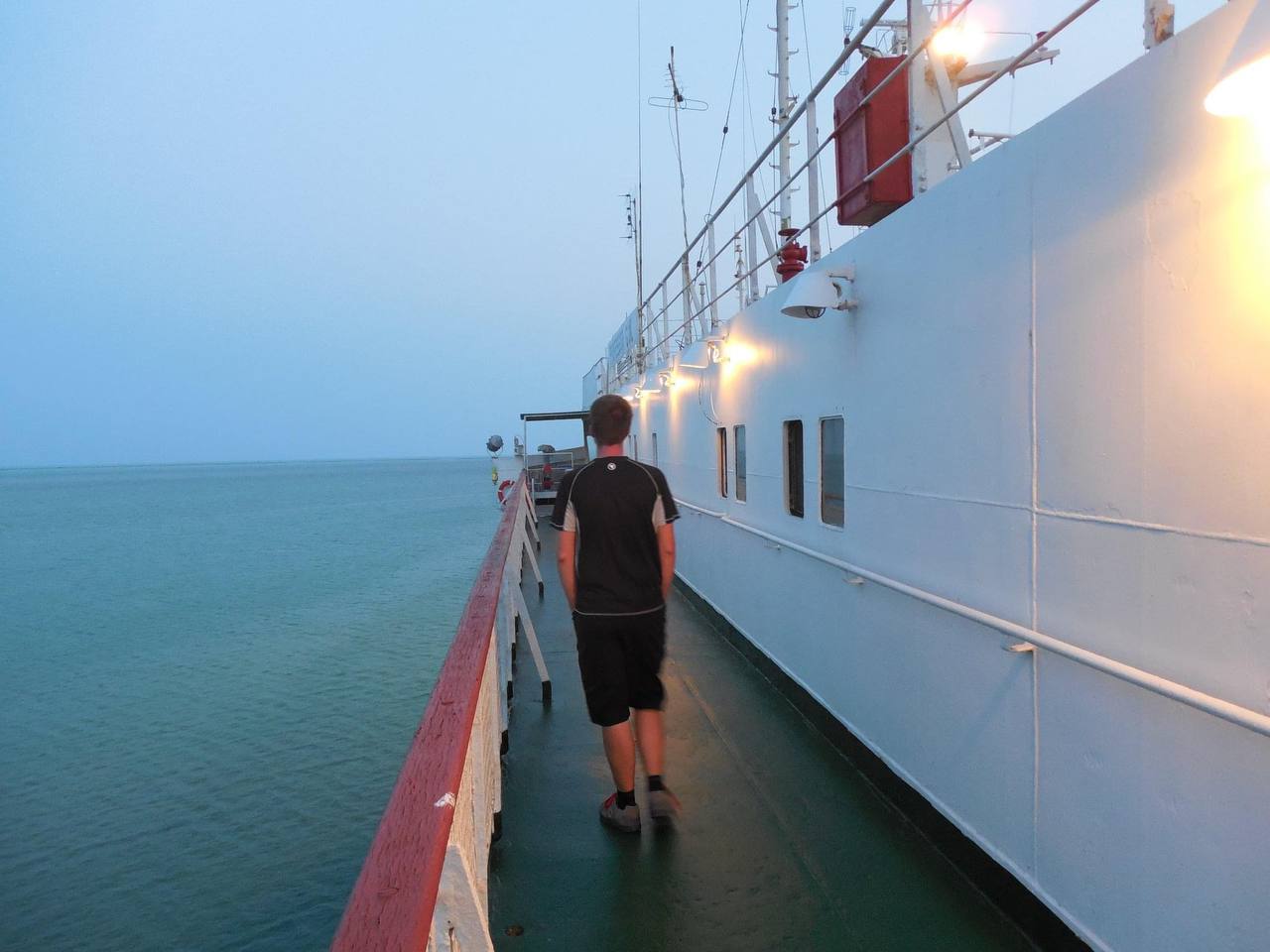
You’d think that every Caspian Ferry that could have been invited would have, but there are actually some new routes in the pipeline routes that may even be up by the time you read this!
Turkmenistan to Russia Ferry – There are reports of a ferry from Turkmanbashy to the small town of Olya in the Volga Delta. We have yet to confirm its full existence, but who do know people who have braved this route on a cargo ship. something which requires a whole other level of bravery!
Caspian Ferry Iran to Kazakhstan and Russia – In 2020 these routes were announced only for the Covid-19 pandemic to put paid to them actually happening. Although with improved trade and diplomatic relations between the countries, as well as their logistical importance to Russia, we see these happening sooner rather than later.
Although not the Caspian Sea, we recently took he ferry from Iran to the UAE, which was in itself an experience.
Turkmenistan to Dagestan – The Caspian Ferry we would really like to see First announced in 2018 it has not happened yet, but would solve a lot of our troubles, particularly when we start running tours to Chechnya again!
Can I travel on the Caspian Sea Ferry with Young Pioneer Tours?
We have previoulsy ran tours that take in the Caspian Sea Ferry, but are not currently offering them. They can though be done as part of an indepebt tour to Central Asia.
You can check out our Central Asia Tours here
About Post Author

Gareth Johnson
Gareth Johnson is the founder of Young Pioneer Tours and has visited over 180+ countries. His passion is opening obscure destinations to tourism and sharing his experience of street food.
See author's posts
- Suspendisse tincidunt nunc nec
Tripadvisor
Latest news.

Sri Lanka introduces free visa fee entry for 35 nationalities

Free travel to Pakistan with new eVisa scheme

Buy the YPT sponsored Nauru football shirt while stocks last!

An American in South Korea Heads North (Part 1)
- Terms & Conditions
- Payment Policy
- North Korea Tours – 2017 Tours
- Tour Extensions
- Independent Tours
- North Korea FAQ
- Our Terms and Conditions
- Our Payment Policy Terms
©YoungPioneerTours.com 2024. All rights reserved.

Home » Travel Guides » 15 Best Places to Visit in Azerbaijan
15 Best Places to Visit in Azerbaijan
Azerbaijan, in the Caucuses region, is a country that straddles both Eastern Europe and Western Asia, so expect a clash of east meets west and you will find a lot to enjoy here.
Located on the Caspian Sea, there are quaint subtropical seaside resorts, or you can embrace Azerbaijan’s name as the Land of Fire with a trip to a flaming mountain or a mud volcano.
There are hillside towns that hide ancient mosques and minarets, as well as some of the most impressive modern architecture in the world in the form of the Flame Towers in Baku, so whatever your agenda is, Azerbaijan has much to offer visitors at the crossroads of Europe and Asia.

Baku, the capital city of Azerbaijan, lies along the Caspian Sea, and is a somewhat curious mix of the old walled city of Icheri Seher, and a modern building craze that has led a boom in skyscrapers, many of which are studded with LCD screens.
Of all of these, make sure that you don’t miss the Flame Towers, three towers built to resemble fire that cast a bronzed glow over the city at night. The city also embraces the modern at the Museum of the Contemporary Art that has over 900 artworks that feature up and coming artists from the region, and is well worth a visit for those interested in modern culture.
You can also try the local produce with a visit to Teze Bazaar, a market famous for its cheeses and spices, or grab a kebab, a local delicacy at one of the numerous open restaurants found all over the city.
2. Icheri Sheher

Known as “Old City” and “Fortress”, Icheri Sheher is a UNESCO World Heritage Site in the centre of Baku, and you will find amazing architectural feats all over this protected quarter of the city.
These include Maiden Tower that dates from the 12th century and was part of the ancient walled city of Baku, as well as Shirvanshah Palace that was constructed in the 13th century. Come here not just for the architecture but also for the handicrafts, such as ceramics, as well as textiles like carpets and traditional Azerbaijan national clothes.
There are a wealth of shops located in Icheri Sheher that are perfect if you want a leisurely stroll around the historic centre of the city and the chance to pick up some souvenirs.
3. Absheron National Park

Sitting in the Azizbeyov region of the city of Baku, Absheron National Park spans 783 hectares of protected land and is the perfect place to come to witness the stunning flora and fauna of Azerbaijan. The national park has a whole host of local wildlife such as gazelles, birds, jackals, badgers, and Caspian seals.
The land here is mostly dry steppe, which lends itself to romantic rolling sand dunes and reed like grass that sways in the wind. The waters here are also known to be crystal clear and teaming with wildlife including the occasional sea snake.
If you want to catch sight of the famed Caspian seals, you need to aim to visit from September onwards.
4. Garasu Volcano

Many visitors to Azerbaijan may not know that the country has the highest number of mud volcanoes in the world, 350 to be exact!
One of the best known is Garasu Volcano, that has been known to spew mud over 1,000 metres into the air. The volcanoes are caused when gases under the earth build up and push the mud high into the air as a release.
The first mud volcanoes are said to have erupted in Azerbaijan 25 million years ago, and visitors to Garasu often say that it looks like the surface of the moon!
5. Naftalan Oil Resort

Naftalan resort is famous due to the Naftalan crude oil found here that is said to have healing properties, and has sparked a boom in medical tourism to the region.
The resort is located in the Naftalan oil fields in the town of Naftalan, and visitors come here to bathe in the oil or to undergo a range of oil based treatments that are said to help with pain relief and anti-inflammatory healing.
Whether or not visitors travel here for health reasons, or just to indulge is this unusual practice, you can still enjoy bathing in the oil in the resort and experience a range of relaxing or stimulating oil treatments at the onsite spa.
6. Gobustan

Gobustan is often referred to as the Azerbaijan version of Stonehenge in the United Kingdom, as it features a prehistoric cromlech (a circle of stones that have been positioned vertically).
It doesn’t end there however, as Gobustan is an archaeological reserve that lies to the south of Baku and offers a fascinating insight into ancient civilizations due to over 6,000 rock drawings that span over 537 hectares.
The findings in Gobustan point to evidence of habitation dating back from the Stone Age, and aside from the cave and rock drawings, there is also evidence of human settlements, and even ancient tombstones.
7. The Caspian Sea

Something of a misnomer, the Caspian Sea is actually the largest lake in the world, and measures a whopping 371,000 square kilometres.
The Caspian Sea sits on what looks like an ocean bed, and the water here is indeed salty, although the saline content is lower than that of other seas and oceans, meaning that it is the perfect place for swimming as it is less likely to cause irritation.
Popular activities on the Caspian Sea include boat cruises, diving opportunities, and fishing.
8. Shirvan National Park

Shirvan National Park, formally established as a protected area in 2003, used to be located under the Caspian Sea, and now spans over 54,000 hectares to the south of Baku. This protected area is made up largely of semi-desert landscape meaning that you will find ambling sand dunes that are the perfect hideaway for the gazelles found here, and nature lovers may also spot a diverse array of species including turtles, hedgehogs, jungle cats, and jackals.
For those more interested in bird life, you will find swans and even flamingos in the park, which tend to congregate around the aptly named Flamingo Lake. Mud volcanoes are also commonly found in the park, the most famous being Bandovan Mountain, which is well worth a visit to take in this amazing natural phenomenon.
For those who want to spend time taking in all the natural attractions here, there is accommodation available in the form of quaint bungalows, or, for more adventurous visitors, camping on the northern beach of the park is permitted with a permit

Nabran is a village that has turned into something of a resort zone in Azerbaijan and is found approximately 3 hours outside of Baku, to the northeast. Nabran lies on the banks of the Caspian Sea, and one of the great attractions here is the climate which provides plenty of sunshine in the summer months.
As such, Nabran has a plethora of water based activities that make the most of the ambient weather, including an aqua park and a variety of swimming pools all over the area.
In the evening, there are bars, restaurants, and nightclubs for those who want to experience some of the nightlife in Azerbaijan.

Found to the west of Baku, this is famed as one of the oldest human settlements in all of the Caucasus and is said to date back 2500 years. Sheki City was a stop off on the Silk Road and was famous for exquisite silks and other textiles. This tradition is still very much alive in Sheki City today, and visitors here will find ornate embroidery and other local handicrafts on offer.
In addition to the arts and crafts found in this city, there are also castles, mosques, and even ancient bathhouses, as well as the Palace of Seki Khans that has stood since the 18th Century. This is even more impressive as an architectural wonder when you consider that the palace was built in its entirety without the use of nails.
Make sure to check out the beautiful wall paintings and carved windows when you visit.
11. Yanardag

Come to Yanardag to see what are known as burning flame outlets. Yarnadag can be translated as “burning mountain” and the hills here appear to be permanently ablaze due to the gas deposits under the surface of the sandstone found here.
Visitors flock to this impressive natural phenomenon at dusk when the flames are most clearly visible, and the area is also studded with quaint teashops where you can sit in comfort and watch the spectacle as you sip a local beverage.
Yanardag is different from the mud volcanoes also found in Azerbaijan as there are no deposits of lava or mud that erupt from the hills, and the region is also one of great religious significance. The fires are said to have inspired fire worship in the Zoroastrianism.
12. Baku Seaside Park

Baku Seaside Park and Boulevard is the place to come for those visiting the country’s capital, and you will find a wealth of activities here, including old fashioned tea shops and cafes that are perfect for whiling away the hours or indulging in a classic seaside treat like locally produced ice cream.
The boulevard stretches over 5 kilometres along the coastline from National Flag Square to the International Baku Port, and is a great place to take in the seaside attractions on offer in Azerbaijan. There are amusement arcades that provide fun for all the family, and there are museums such as the Carpet Museum of Azerbaijan for those who want to learn more about the rich history of the textile industry in Azerbaijan.
Visitors will also find Baku Crystal Hall, that is famous for hosting the 2012 Eurovision Song Contest, and there are regular concerts, musical programs, and art exhibitions hosted in the venue.
13. Ateshgah

Azerbaijan has long been known as the Land of Fire, due the burning of natural oil and gases under the earth,said to have inspired the fire worshippers who later founded the Zoroastrian faith. In the days of old these burning gas outlets were thought to contain evidence of a divine being, and ancient temples were built upon the sites.
One of these temples is Ateshgah, located in the suburb of Surakhany in just outside of Baku. Ateshgah is said to date from the 17th century, and the temple complex is built in the shape of a hexagon.
There is a fire alter in the centre, although the natural gases that led to the original construction of the temple have now been exhausted and the fire is produced via a gas pipeline from Baku.
14. Yanar Bulag

If you want see burning water then you can’t miss a trip to Yanar Bulag, a curious natural phenomenon that is located on the road between the towns of Astara and Lankaran.
The water is pumped out of a pipe and can be set alight due to the levels of natural methane contained within, making the oxymoron of flaming water a reality.
Locals in Azerbaijan believe that the water here has healing properties and much of it collected as drinking water to cure a whole host of ills.

The city of Astara, in the Astara Rayon district of Azerbaijan, is found just across from the border with Astara in neighbouring Iran. Famed for being one of the most beautiful areas of the country, surrounded by forest and mountains, the city of Astara itself has picturesque cafes and local restaurants, as well as a museum.
The museum is dedicated to archaeological finds in the region. These include coins and stone work such as statues of human figures and animals that are said to be over 2,000 years old.
If you venture just outside of Astara, you will find charming mountain villages that feature ancient mosques, towers, bathhouses and mausoleums.
15 Best Places to Visit in Azerbaijan:
- Icheri Sheher
- Absheron National Park
- Garasu Volcano
- Naftalan Oil Resort
- The Caspian Sea
- Shirvan National Park
- Baku Seaside Park
- Yanar Bulag
- +989122085257
- [email protected]
- Iran Cultural Tours
- Iran Nature Tours
- Iran Hiking Tours
- Iran Desert Tours
- Iran Food Tours
- Iran Ski Tours
- Austrian Airlines Pilots & Crew
- Iran Women Only Tours
- Iran Tailor-made Tours
- All IranTours
- Iran Travel Blog
- Our License
Where Are the Best Beaches in Mazandaran?
Mazandaran, with its stunning coastline along the Caspian Sea, hosts some of the most beautiful beaches in Iran. In the following paragraphs, we’ll explore the top beaches in Mazandaran, known for their scenic beauty and unique attractions.
Mohammadabad Beach
Another picturesque city in the beautiful province of Mazandaran, hosting some of the best Caspian Sea beaches. The distinct feature of this beach is its narrow width, offering a different experience than other northern Iran beaches. It has ample tourist facilities, so be sure to visit.
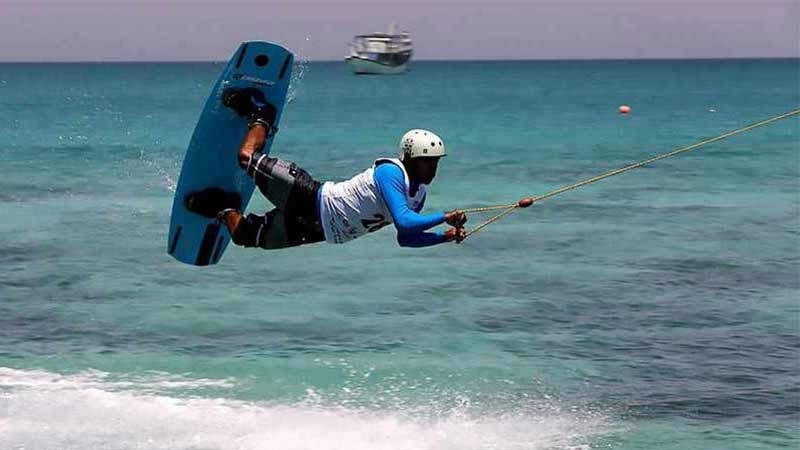
Khalij-e Ramsar Beach
Why is Khalij beach so popular? Because it offers numerous facilities for travelers and is one of the cleanest beaches in Mazandaran. It’s even considered the cleanest beach in the entire north of Iran. Serenity alongside a beautiful and clean landscape is all that one expects from a beach. To visit this beach, head to Ramsar, next to the Khalij Hotel.
Best Beach in Chalus
Chalus offers many natural and tourist attractions. Close to Chalus, you can find the Namak Abrud beach and the Namak Abrud tourist town. Staying in Namak Abrud and Motel Ghoo are also popular options among travelers.
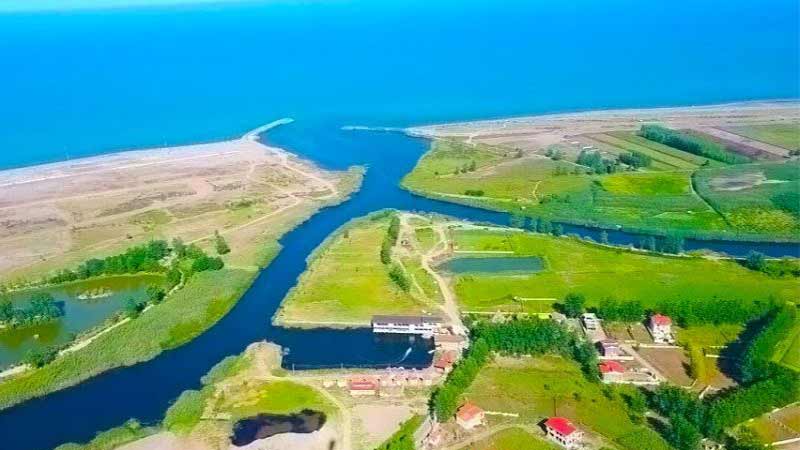
Sitra Beach in Nowshahr
Sitra Beach, also known as Hosseini Beach Resort, is another option for your trip. Sitra is located in the city of Nowshahr and is a major beachfront area. It also has excellent tourist and welfare facilities.
The Best Beaches in Gilan
Gilan, one of the beautiful northern provinces with some of the most beautiful and best beaches in the country, is a major tourism destination. If you’ve experienced being in this beautiful province and the beautiful city of Rasht, you know what we mean. Here we have listed some of the most beautiful and famous beaches of Gilan.
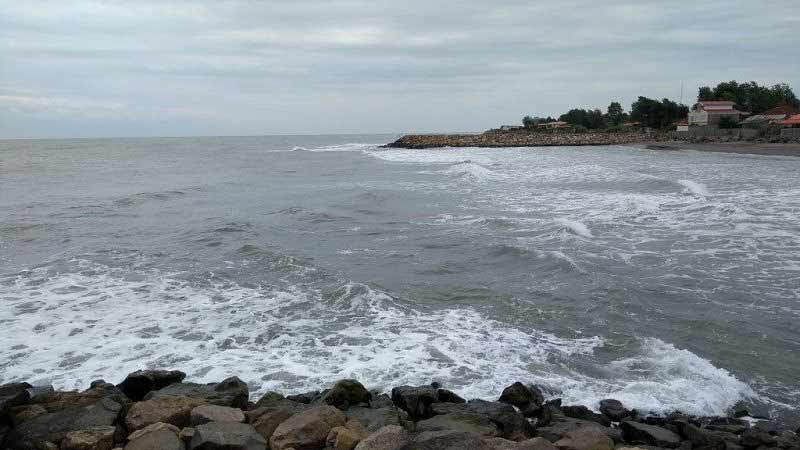
Chamkhaleh Beach
In Gilan province, there’s a town called Chamkhaleh, home to the most attractive and beautiful beach in Gilan. Chamkhaleh Beach has many amenities and offers unique and varied landscapes that attract all travelers and tourists. Go to the town of Chamkhaleh, just 10 kilometers away from Langarud. Much of this town is along the coastline. The extraordinary beauty and charm of Chamkhaleh Beach have earned it a place among the best beaches in northern Iran. If you’re looking for a sandy beach full of beautiful shells, we recommend walking at least one hour on Chamkhaleh Beach. To get there, enter the road from Langarud towards Chamkhaleh, cross a bridge after 10 kilometers, and turn to the right and you will be there.
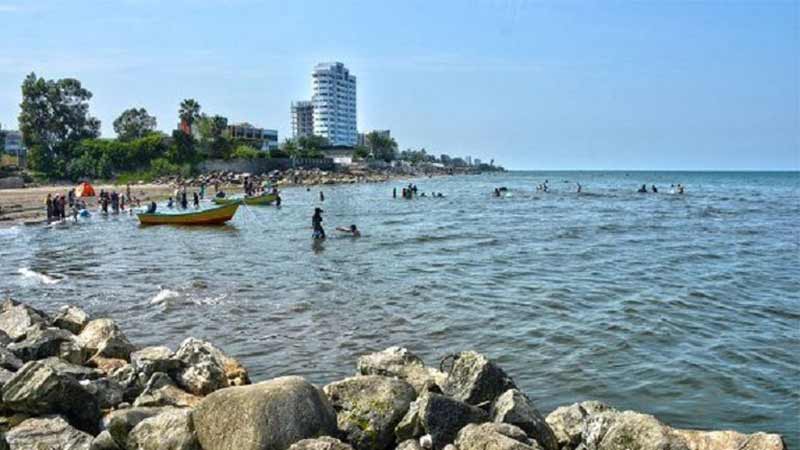
Best Beach in Kiashahr
If you’re interested in walking on the the Caspian Sea beaches , we recommend Kiashahr Beach and its seaside boulevard. There’s also a luxurious motorcycling track here. Kiashahr is located next to Astaneh Ashrafieh and is about 17 kilometers away from it.
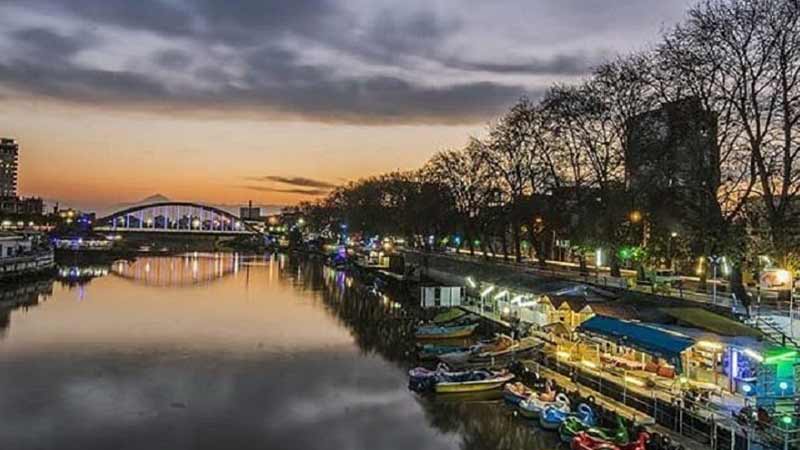
The Best Caspian Sea beaches for Accommodation
It can be boldly said that no trip to the Caspian Sea beaches will be complete without a stay. Therefore, many are looking to book villas, hotels, and local cottages. The good news is that you can stay in many coastal cities. For example, staying in the resorts of Ramsar can be one of the best options, as some of the most beautiful and best northern Iran beaches are located in this scenic city.
Chapkerud Beach
This beautiful beach along the Caspian Sea offers short-term accommodation for travelers. Restaurants, summer and winter cabins, along with appropriate and beautiful beach landscaping, make travelers feel comfortable and safe on Chapkerud Beach. You can also engage in various beach entertainments and games such as beach soccer, children’s play equipment, volleyball, etc.
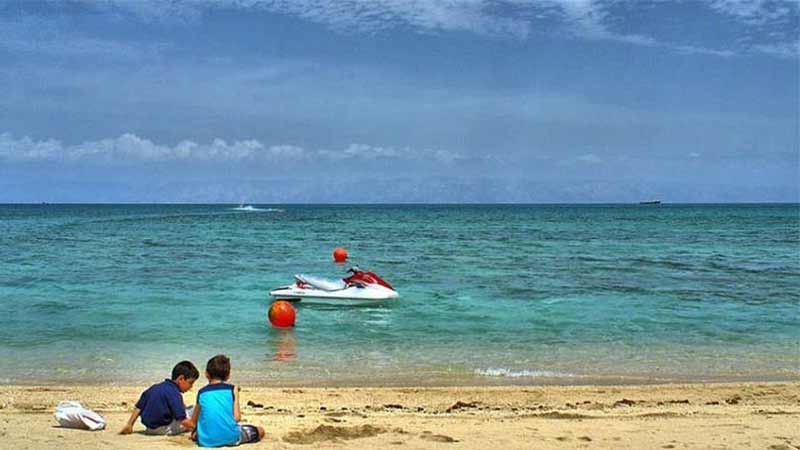
Namak Abrud Beach
A famous and beautiful beach is located on the Chalus-Tonekabon Road. Beautiful views along with recreational and welfare facilities attract many travelers and tourists to this beach. Among the activities you can do at Namak Abrud Beach are horse riding, amusement parks, motorcycling tracks, swimming, shuttle rides, boating, and cycling. This beach is located on the northern edge of the tourist city of Namak Abrud.
A sandy section of the Caspian Sea beaches , good weather, proper beach layout, and swimming opportunities for both men and women make Noor Beach very popular. This beach stretches for 23 kilometers. An interesting fact about Noor Beach is that you can visit it even in the summers and have a great time.
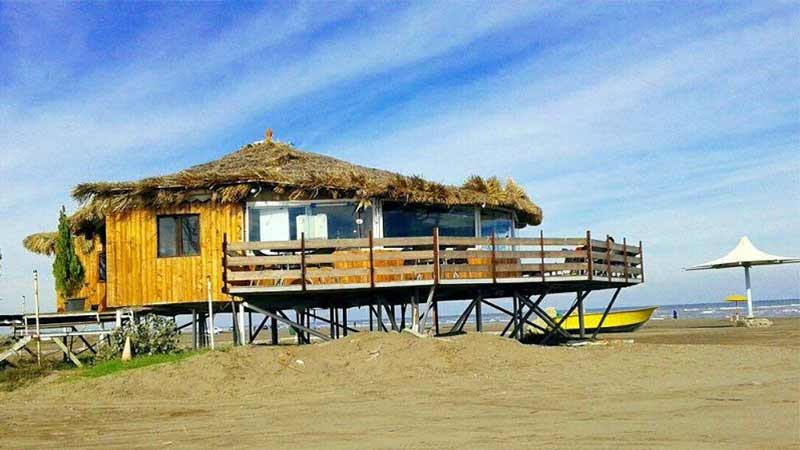
The Most Beautiful Beach in Sari
Have you been to Khazarabad Beach in Sari? Just know that this beach is now a tourist hub in Sari. Although this beach was privately owned for many years, it is now open to the public. Go to Sari and entrust yourself to the beautiful Caspian Sea at Khazarabad Beach. The peace and quiet, occasionally broken by the roaring sea, is very beautiful. The beach is about 35 kilometers from the city of Sari, so it’s seen as a new destination. But you shouldn’t miss it on your trips to the north.
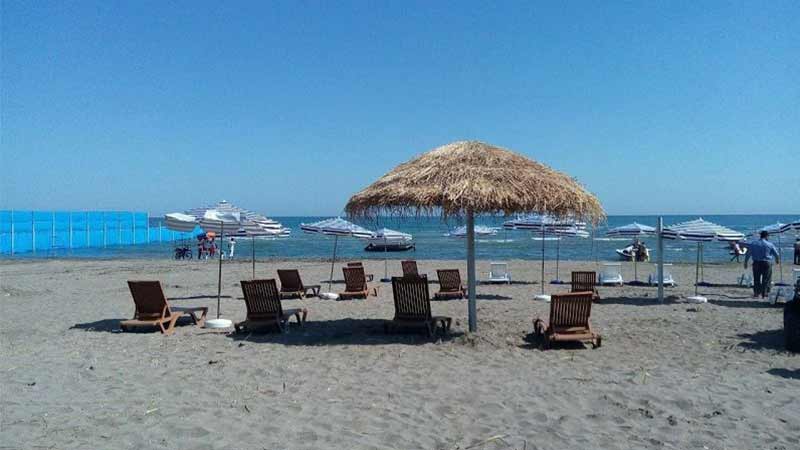
Best Northern Iran Beach for Swimming
Swimming in the Caspian Sea beaches are very common and popular activity on trips to the north. In this regard, you should act according to the laws and standards of each city and beach. Many of these beaches announce separate swimming schedules for men and women. So, it’s a good opportunity to swim on the northern Iran beaches.
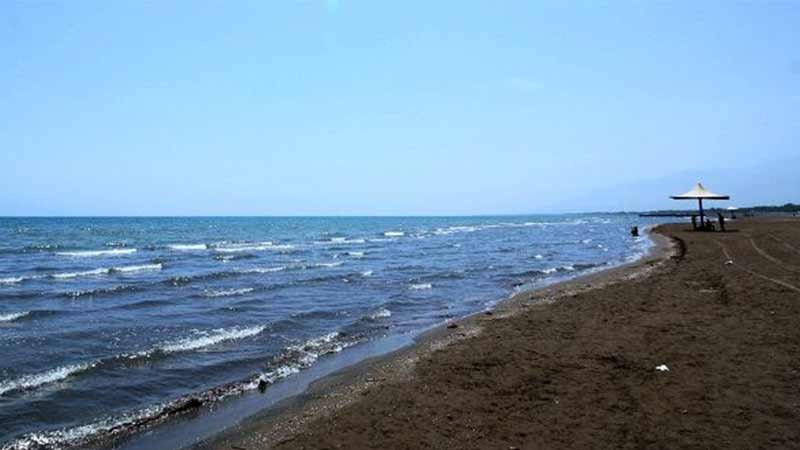

Best Beach in Gilan for Swimming
Among the beautiful beaches of Gilan where you can swim is Qarug Beach. This beach is located in the village of Qarug, one of the tourist villages of Talesh. Water sports and swimming facilities for both men and women are available on this beach. Besides, there are other facilities such as a riding club, carriage riding, hotels, horse riding tracks, and other recreational places.
Best Beach in Anzali for Swimming
If you’ve been to the city of Bandar Anzali, you’ve seen many tourist and welfare attractions there. One of them is the seaside village of Bandar Anzali, known as the largest garden city in Iran. It’s usually crowded with travelers on weekends. Popular and attractive activities here include swimming, shopping, and beach games. Parsi Tours recommend not to miss peaceful night walks along side the beach.
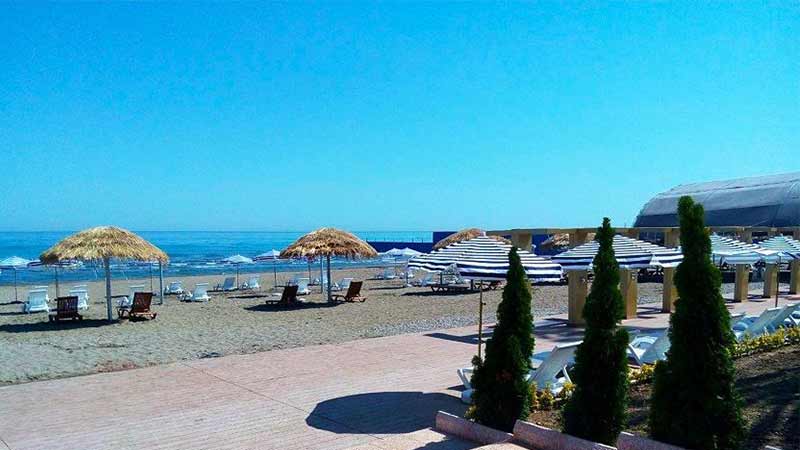
Best Beach in Ramsar
Ramsar is known as the most beautiful city in the north. A city full of natural attractions, from forests and springs to the beaches and resorts, offering very good welfare and recreational services to travelers and tourists. An interesting fact about Ramsar is the variety of its beaches. Here you can find various rocky and sandy parts of the Caspian Sea beaches . The best ones are Katalem and Chapakrud beaches, which are very famous. We also recommend visiting Ramsar’s Talayi (Golden) Beach. The resorts of Ramsar include Lido Beach, Khalij-e Ramsar Beach, Touska Sara Beach, Shahrdari Beach, and Darya Pashte Beach. In these resorts, you will have access to many welfare, hygiene, accommodation, and recreational services. So, if you plan to stay in Ramsar, make your way to one of its famous resorts. You can walk, shop in stores, engage in water and beach games, visit local markets, and also go to other nearby attractions such as museums and coffee houses. What could be better?
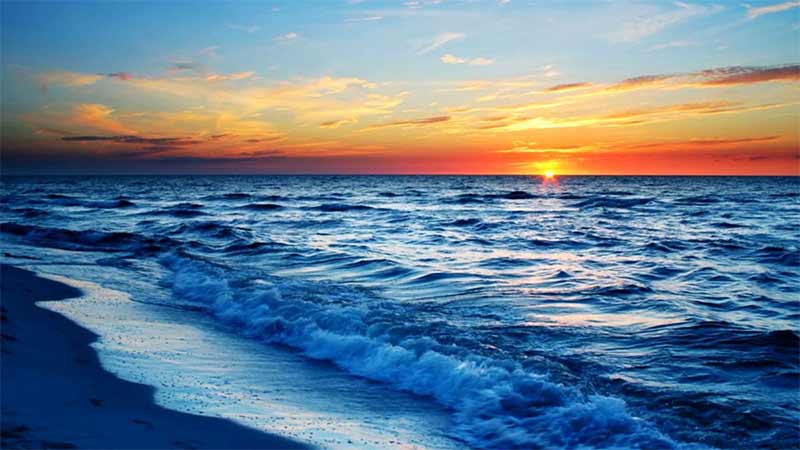
Sisangan Beach for Swimming
Experience a clean and different beach in Sisangan. Just the sandy part of the beach stretches over 30 hectares. Imagine it with bushes and trees such as tusk, pomegranate, medlar, daghdaghan, wild tomato, oak, lerg, black oleaster, and blackberry. The waters of the Caspian Sea here are crystal clear. If you want to swim and have played beach volleyball and jet ski beforehand, head to Sisangan Beach.
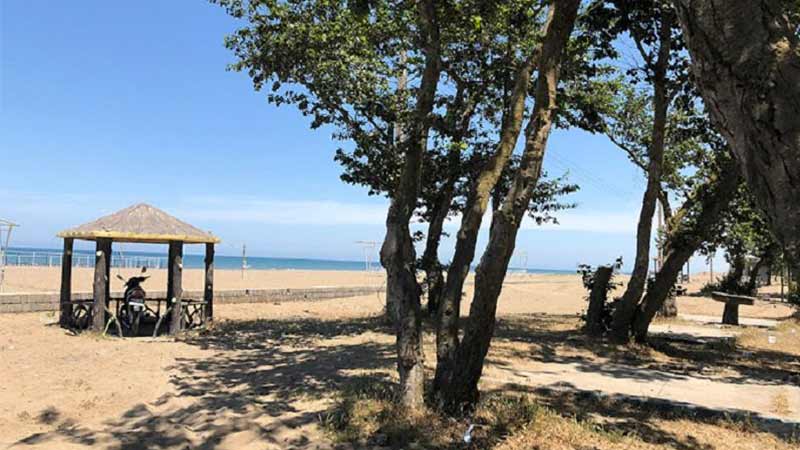
Which Northern Iran Beach Is the Most Beautiful?
Each of the northern Iran beaches has its own unique beauty. Some of these beaches are rocky, some sandy, and some pebbly. Therefore, it’s very important to choose a different one to visit on each of your trips. You can choose from the beautiful beaches of Mazandaran and the resorts of Ramsar to the beaches of Gilan, Nowshahr, and other cities. Some of these beaches, such as Namak Abrud Beach, have very good welfare and accommodation facilities, while Chamkhaleh Beach offers a pristine and different state.
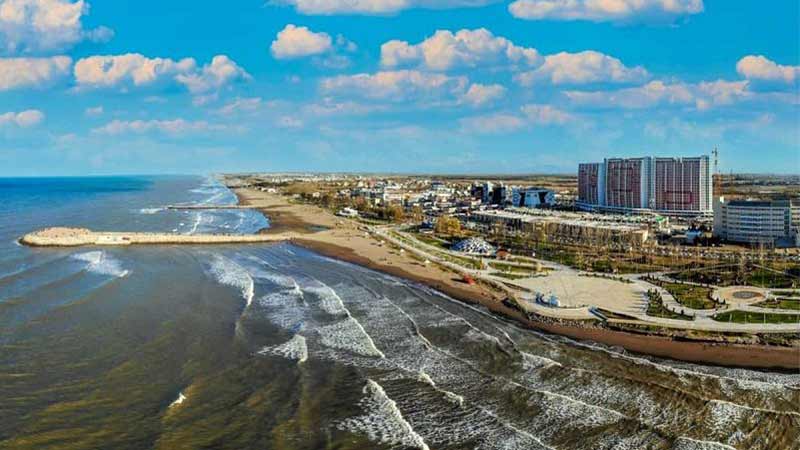
Which Northern Iran Beach Has Shells?
Only one beach in the north of Iran has shells, and it’s located in Astara. The beach of the border town of Astara, situated in the southern strip of the Caspian Sea, stretches about 18.5 kilometers in length. Moreover, 1.5 kilometers have been designated as a wildlife sanctuary. In this area, you can see various types of shells. Consider Astara’s shell beach as a unique beach destination. As you walk along this beach, you’ll feel different shells under your feet. These shells have reached here over many years from the sea. Put them to your ear, and you’ll clearly hear the whisper of the sea. Alongside this, various amenities for comfort, hygiene, and accommodation are available for travelers on this beach. Don’t miss visiting the large beach market. You’ll find great items at very reasonable prices there.
Now it’s time to pack your bags for a different kind of trip to the Caspian Sea beaches in north of Iran and explore its coasts.
Leave a Reply Cancel reply
Your email address will not be published. Required fields are marked *
Save my name, email, and website in this browser for the next time I comment.
Recent Post
- Tracing the Legacy of the Sassanid Empire in Iran’s History
- Majestic Peaks: Exploring the Alborz Mountain Range of Iran
- Walking with Kings: The Enduring Legacy of Cyrus the Great
- Persian Carpets: Weaving Through Iran’s Cultural Fabric
- Persian Qanat System: The Iranian Miracle in the Desert
- The Flavorful World of Persian Spices: A Culinary Adventure
Iranian Caspian Sea | The Enchanting Sea
Caspian sea geographical overview, is the caspian sea a lake or a sea, unique features and characteristics of caspian sea, iran caspian sea environmental significance, diverse marine life in the caspian sea, caspian sea beaches in iran, namakabroud beach, ramsar beach, javaherdeh beach:, iran caspian sea resorts, pamchal resort, chalus, anzali lagoon resort, bandar-e anzali, unique experiences and activities, iranian caspian sea cultural and historical significance, iran caspian sea local traditions and events, iran caspian sea activities for tourists, water sports (e.g., sailing, kayaking), fishing excursions, hiking and nature walks, exploring nearby attractions, local cuisine of caspian sea in iran, popular restaurants and cafes, when to visit caspian sea in iran, leave a comment, most popular, #eavartravel, related content, imamzadeh ismail: a historic safavid era shrine in isfahan, imamzadeh jafar: 11th-century mausoleum in damghan, toghrol tower: iran's ancient sundial, shapouri house | a must-visit landmark in shiraz.
August Sale: The world is waiting at Up to 70% OFF

Caspian Sea: Jewel of the Iranian Coastline

The Caspian Sea is recognized as the world’s largest lake. Although it is technically not a sea because it doesn’t connect to open seas, it earned the name “sea” due to its vastness. The water of the Caspian Sea is salty, and it doesn’t qualify as a freshwater lake. Additionally, it boasts a rich ecosystem and is considered a prominent tourist attraction that draws in numerous visitors, as we’ll explore further.
All About the Caspian Sea

The name “Caspian” is derived from the Caspians, one of the oldest Iranian peoples residing in the northern regions of the Iranian Plateau. They lived in scattered areas ranging from Tehran to Mazandaran , Gilan, Azerbaijan, Armenia, and the Caucasus. The Caspians lived in Iran approximately three thousand years ago. They were of Iranian descent, and their language belonged to the Iranian language family. During the Median Empire, a part of the territory under their influence formed the Caspian people. Later, during the Achaemenid period, all the regions under their influence, like other areas in Iran, came under the rule of the Achaemenids.
Read more: Request Iran Visa
Location of the Caspian Sea
The Caspian Sea, as the largest enclosed water body within the confines of the Asian and European continents, is currently bordered by five coastal countries. It is located in the northern part of Iran and the southern part of Russia, spanning Turkmenistan, Kazakhstan, and Azerbaijan to the east. The Caspian Sea’s coastline stretches about 7,000 kilometers, and its surface area ranges from 371,000 to 386,000 square kilometers. With an approximate length of 1,200 kilometers and an average width of 320 kilometers, it covers an area of 438,000 square kilometers and holds a volume of 77,000 cubic kilometers. This makes it the largest relatively freshwater lake in the world.
Caspian Attractions in Iran

Here are some Caspian Attractions:
Caspian Sea Coast
The coastline boasts beautiful sandy beaches with clean, warm, and calm waters. These shores are a hotspot for summer tourists seeking sun, relaxation, and swimming. Tourist infrastructure developed in the countries surrounding the Caspian Sea, including Iran, has compiled a list of the most attractive tourist destinations along the shores of the world’s largest lake. The pristine coastline offers an excellent environment for unwinding, making it no wonder that the Caspian Sea shores are one of the most popular tourist destinations on the planet. Caspian Sea attractions include Caspian Port, a developing port located on the Caspian Sea’s coastal waters, featuring 25 wharf posts. The largest and most comprehensive passenger and terminal post collection in northern Iran is situated on the shores of Gilan’s cities like Rasht and Chaboksar, within the Anzali Free Trade-Industrial Zone area.
Fishery in the Caspian Sea

Fishing for sturgeon fish in the Caspian Sea begins in the autumn season. Fishermen spread vast nets in the shallow waters along the eastern coast of the Caspian Sea, and they usually spend their days fishing. They use a technique called “Pare,” where large nets, approximately 100 meters long and 7 to 10 meters high in a U-shape, are placed in the shallow waters near the coastline. Fishermen deploy these nets almost every morning, and by sunset, they collect their catch. This traditional method of fishing is one of the oldest practices on the northern shores of Iran and primarily relies on the physical strength of the fishermen. Common fish species in the Caspian Sea include sturgeon, whitefish, and carp, which are mostly bone-in fish.
The Caspian Caviar
Iranian caviar, specifically black caviar or “Marvarid Siah” in Persian, is not only famous in Iran but also enjoys a significant global reputation. Interestingly, other countries that actively export caviar introduce their product as Iranian caviar to enhance their sales. This exquisite caviar is extracted from unique species of fish found in the Caspian Sea. The rarity of this caviar, the exclusivity of the species, and its exceptionally high quality set it apart from other caviar types. The whole range of caviar produced in Iran, whether from wild or farmed sources, enjoys a distinguished status worldwide and is considered the finest. In general, caviar is a highly nutritious and valuable food. Still, Iranian caviar, particularly beluga caviar, is highly regarded for its superior quality and exceptional taste, making it an energy powerhouse for a healthy diet.
Caspian Sea Oil Industry
Caspian sea oil reserves.
The Caspian Sea is recognized as the world’s largest lake, covering nearly 40% of the total area of the world’s lakes in terms of oil and gas reserves. After the Persian Gulf and Siberia, it ranks as the third-largest global energy source. According to the World Energy Organization, the Caspian Sea holds confirmed reserves of over 100 billion barrels of crude oil and an estimated 12 trillion cubic meters of natural gas. These figures highlight the significant importance of the Caspian Sea for the countries bordering it, not only in geopolitical terms but also due to its vast oil and gas reserves.
Rivers of the Caspian Region

The northern part of the Caspian Sea is relatively shallow, with a depth of less than 5 meters. Approximately 130 rivers feed it. The largest among them is the Volga River, which annually contributes 241 cubic kilometers of water to the Caspian Sea.
These rivers play a crucial role in providing freshwater to the region’s inhabitants, both human and wildlife, despite the Caspian Sea itself being salty. The presence of these rivers, along with their rich historical and geographical significance, ensures that the Caspian region maintains a moderate and humid climate.
The Volga River, the largest river basin in the Caspian Sea, is the primary source of around 80% of the water entering the sea. The average flow of the Volga into the Caspian Sea is approximately 250 cubic kilometers per year. The Sefidrud River, with an average flow of about 4 cubic kilometers per year, is the largest river on the Iranian coast.
In total, 15 rivers and watercourses flow into the Caspian Sea, holding immense historical, political, and natural significance. Historically, these rivers have played a vital role in trade and relationships in the region. They not only preserve the unique identity of the Caspian Sea but also provide invaluable contributions to the ecosystems.
Cities Near the Caspian Sea

Mazandaran:
Mazandaran has long been a favorite travel destination, drawing thousands of tourists from all over Iran each year. The journey’s beauty begins with the scenic routes. The Firuzkuh Road, Chalous Road, and Haraz Road are some of the oldest and most captivating routes in Iran, winding through forests and lush landscapes.
Read more: Wonders in Iran
If you’re enamored with sitting by the beach and watching the sun rise and set over the Caspian Sea’s waves, “Ramsar’s Silvery Beach” is the place to be. It offers a peaceful setting to appreciate the serene beauty of the Caspian Sea.
Noshahr, as one of the most famous coastal cities in Mazandaran, is no exception to this rule. One of Noshahr’s most beautiful beaches is Sisangan Beach that is one of the most beautiful beaches in Iran and also the famous Sisangan Forest Park.

Few have not heard of the “Namak Abrud Beach,” famous and beautiful; it’s one of the beaches of Chalus, which is packed with visitors during the spring and summer seasons. Enjoying a trip to Namak Abrud is not just about watching the beach and the sea; it’s an unforgettable adventure.
Babolsar is a small coastal city in the heart of Mazandaran, surrounded by sea, mountains, and forests. This area is located north of Babol city. The proximity of Mazandaran cities allows you to cover multiple destinations in a single trip, offering a unique blend of sea, mountain, and forest landscapes.
These cities provide stunning coastal getaways, picturesque roads, serene beaches, and opportunities for thrilling adventures like jet skiing, boating, karting, and quad biking. Enjoy these destinations for their natural beauty and cultural significance.
FAQs about Caspian Sea
- Does Caspian Sea belong to Iran?
The Caspian Sea is not owned by any single country. It is the world’s largest enclosed body of water, bordered by five countries: Russia, Kazakhstan, Turkmenistan, Iran, and Azerbaijan. Each of these countries has a share of the Caspian Sea, and international agreements determine their respective boundaries and usage rights.
- Is Caspian Sea salt or freshwater?
The Caspian Sea is technically a saltwater lake. It has varying salinity levels, with the northern and central parts being saltier, while the southern part has lower salinity. It is not as salty as typical oceans but not as freshwater as rivers and lakes.
- What do Iranians call the Caspian Sea?
In Iran, the Caspian Sea is often referred to as the “Darya-ye Khazar” or simply the “Khazar Sea.”
- Do sharks live in the Caspian Sea?
No, sharks are not native to the Caspian Sea. The Caspian Sea’s ecosystem primarily consists of various species of fish, including sturgeon, as well as other marine life adapted to its unique conditions.
The editorial department of Kental Travel prepared this article, and its non-commercial use is unchecked by the mention of the source. To check out more articles related to traveling to Iran, you can visit the Kental Travel blog .
For business
For tourist
Place your business on the National Tourism Portal
Commercial Platform Module
Tourism ecosystem
Module "Online Tourism"
View tourism statistics
Module "Tourstat"
Become an investor in tourism projects
Investment Module
Notification of arrival of a foreign guest
Information system "eQonaq"
Submit an application for subsidization
Subsidies Module
MICE: Meet in the heart of Eurasia
Module "MICE"
- Akmola Province
- Aktobe Province
- Jetysu Province
- Almaty Province
- Atyrau Province
- East Kazakhstan Province
- Abay Province
- Zhambyl Province
- Karaganda Province
- Ulutau Province
- Kostanay Province
- Kyzylorda Province
- Mangystau Province
- Pavlodar Province
- Turkestan Province
- West Kazakhstan Province
- North Kazakhstan Province
- Cultural Heritage
- Nomadic Culture
Publications
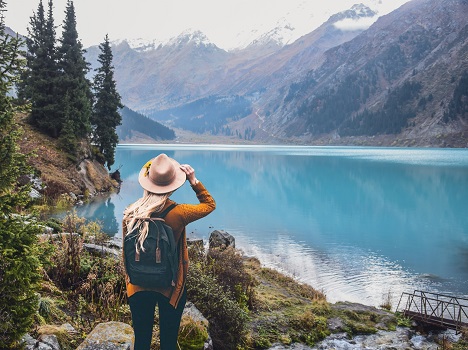
About Kazakhstan
- How to Get a Visa
- Migration Catalog
- Currency Exchange
- Mobile Services in Kazakhstan
- Transport Infrastructure
- Useful Phone Numbers
- Measurements
- List of Useful Websites
- Car Rentals AVIS
Tour Operators
Tourist attractions
Souvenir Shops
National tourism portal
Book the best tours, hotels, cars, and campsites
Module "Commercial Platform"
750th anniversary of the Golden Horde
Module "Golden Horde"
The landscapes of Kazakhstan in the best quality.
Module "Photobank"
eQonaq information system
Caspian Sea
Relax and bask in the sun on the Caspian Sea coast and enjoy some of the best activities on the beach.
Visit Duration
The Caspian Sea is actually a lake, but because of its impressive size and the title of the largest closed reservoir, it is called the sea. The city of Aktau, that is located right on its shore, has beautiful beaches. A large number of warm sunny days, mud with healing properties, and springs with mineral water - all of this attract tourists to Aktau. Local authorities are focused not on quantity but on quality of entertainment: there is proper infrastructure and nice service.
(+98) 935 -122 0038
North of iran.
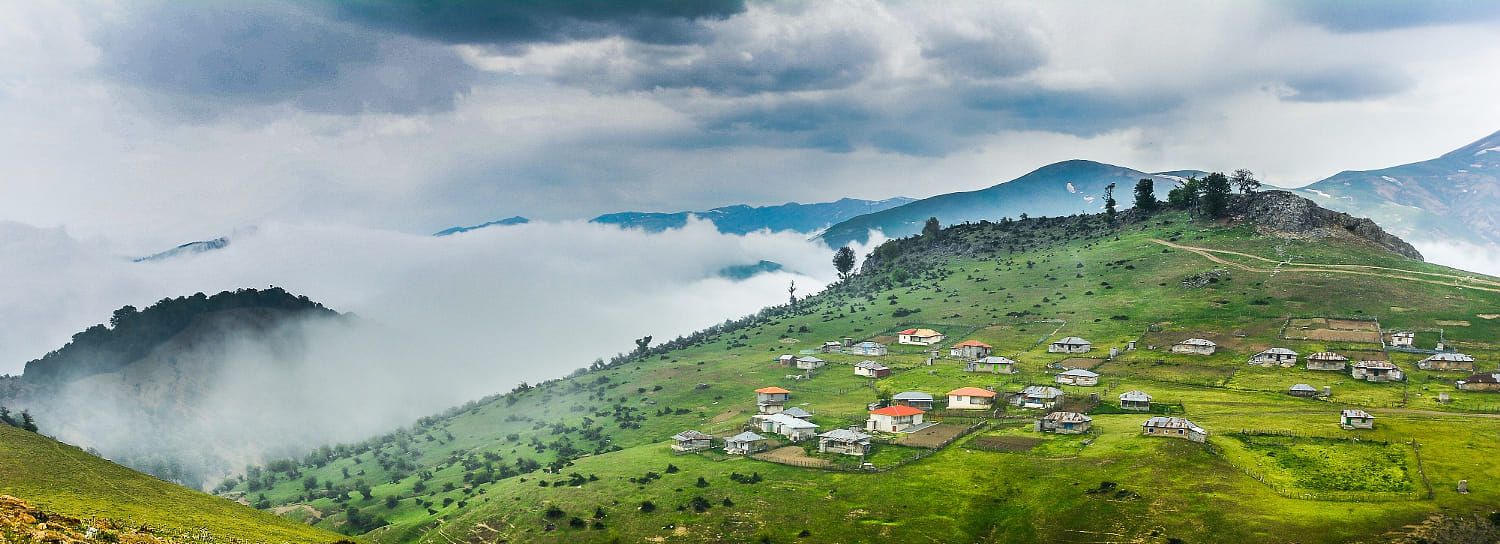
Table of Contents
Welcome to the captivating North of Iran , a region of stunning beauty. Where the majestic Alborz Mountains meet the Caspian Sea, Earth’s largest island body of water.
Encompassing the provinces of Gilan , Mazandaran , and Golestan , this enchanting destination boasts pristine forests, snow-capped peaks, and breathtaking seashores.
Join us on an extraordinary journey as we unveil the charms of Northern Iran. This must-visit destination promises a delightful blend of nature, culture, and warm hospitality.
The Caspian Sea: A Natural Wonder of Epic Proportions
The Caspian Sea, often dubbed “ the biggest lake of the world ” or “the smallest independent sea on the globe”, is the defining feature of Northern Iran. Stretching along the region’s southern border, this vast body of water is a vital hub for shipping routes and a significant natural resource for the country.
The Gilan, Mazandaran, and Golestan coastal provinces are blessed to share their borders with this magnificent sea, covering approximately 3.7 percent of Iran’s territory.
In the north of Iran, The Caspian Sea’s unique geology adds to its allure. The Alborz coastal mountains, a striking tectonic phenomenon, create a dramatic backdrop for the sea, separating it from the lush green lands of Northern Iran. Deep-sea trenches are a notable feature, with the central section hosting the most profound depths. The Iranian coasts gently slope toward the south, interrupted by the Anzali Lagoon and Gorgan Gulf on the western and eastern ends.
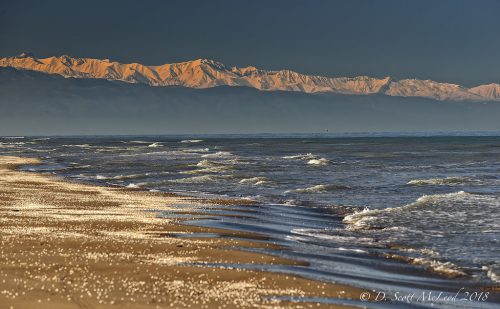
The Abundant Bounty of the Caspian Sea – A Mecca for Marine Life
Beyond its breathtaking beauty, the Caspian Sea is teeming with an incredible diversity of marine life in the north of Iran. With over 850 species of marine creatures and more than 500 types of plants , the sea serves as a rich food reservoir, supporting vital fishing industries. However, the Caspian Sea’s claim to fame lies in being the primary source of caviar , the highly coveted delicacy revered by gourmets worldwide. Mazandaran, renowned for its high-quality caviar, is uniquely positioned in international markets.
The fishing communities along the Caspian Sea have been perfecting their caviar harvesting techniques for generations, ensuring that the process preserves the highest quality and flavor. As a result, caviar from Mazandaran is sought after by gourmet enthusiasts and renowned chefs around the globe. It symbolizes luxury and indulgence, making it a prized possession in the culinary world.
The Rich Cultural Heritage of Northern Iran
Northern Iran boasts not only natural wonders but also a vibrant cultural heritage that endears itself to travelers. The region’s economy thrives on various sectors, including agriculture, livestock, gardening, beekeeping, fishery, and handicrafts. The fertile lands yield abundant rice, tea, tobacco, and oranges. At the same time, skilled artisans produce exquisite handicrafts like Bambobafi, Kilim, and Basketry.
The cultural significance of the North of Iran can be traced back to ancient times. This land was once home to the ancient kingdom of Hyrcania, renowned for its military might and vast territories. The medieval region of Tabaristan also flourished in this area, leaving behind a legacy of art, architecture, and literature that continues to inspire contemporary Iranian culture.
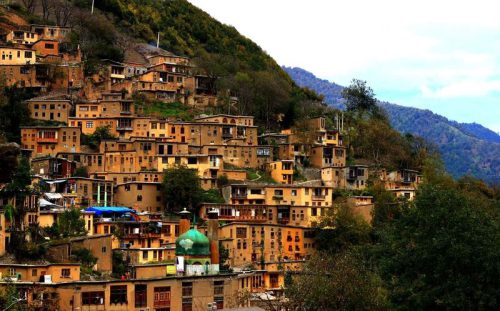
Best Tourist Attractions In North of Iran
Northern Iran’s sceneries have long captured travelers’ hearts, drawing crowds, especially during Nowruz, the Persian New Year. A host of enchanting tourist attractions awaits exploration.
4 Best Places to Visit in Northern Iran:
1. Valasht Lake , nestled amidst lush greenery and snow-capped peaks, is picturesque. Visitors can partake in boat rides on the tranquil waters or bask in the serenity of this natural wonder in the north of Iran.
2. Sisangan Natural Park , located in Golestan province, is a true sanctuary for nature enthusiasts. As one of the most important wetlands in the region, it provides a haven for migratory birds and endangered species. The park’s diverse ecosystem includes marshes, forests, and rivers, making it an excellent birdwatching and wildlife observation destination.
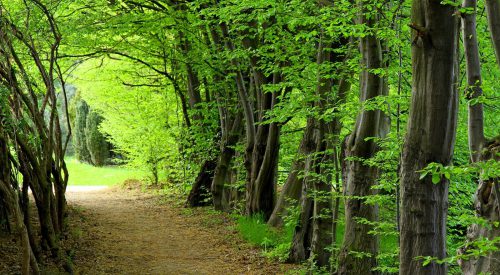
3. Anzali Lagoon, near Rasht, is a haven for bird lovers. With over 300 species of migratory birds, Anzali lagoon is a paradise for birdwatching enthusiasts. Visitors can explore the lagoon’s waters by boat and marvel at the colorful avian inhabitants.
4. Qal’e Rudkhan Castle , a historical gem dating back to the Seljuk era, is perched on the slopes of the Alborz Mountains. Its strategic location atop a rocky hill offers breathtaking views of the surrounding landscape. The castle’s architectural marvels and imposing walls transport visitors to an era of chivalry and grandeur.
These are just a few of the many wonders that Northern Iran has to offer. Each attraction tells a unique story of the region’s rich history, cultural diversity, and natural splendor. Making it a destination that promises an unforgettable experience for all.
Souvenirs and Cuisine of Northern Iran
Every trip is complete with bringing back the north of Iran’s essence. Visitors can delight in the region’s culinary offerings, including various pickles , jams , olives , and pies , each a unique expression of the local flavors. The traditional methods of pickling and preserving fruits and vegetables have been passed down through generations, resulting in an array of delectable treats that reflect the region’s culinary heritage.
The handicrafts of Northern Iran are equally captivating, showcasing the artistry and skill of local artisans. Bambobafi , a traditional craft of weaving bamboo into intricate patterns, produces beautiful household items and decorative pieces. Kilim , a flat-woven rug, showcases vibrant colors and geometric patterns, adding a touch of traditional elegance to any space. Basketry, crafted from natural fibers, produces durable and aesthetically pleasing items for storage or as decorative pieces.
These handicraft treasures not only make for unforgettable souvenirs but also provide a glimpse into the artistic prowess and cultural richness of Northern Iran. By bringing home these unique items, visitors can keep a piece of this enchanting land close to their hearts and share the region’s cultural heritage with others.
Conclusion: Embrace the Timeless Charm of Northern Iran
North of Iran is a destination of unparalleled beauty. Where nature, culture, and warm hospitality come together to create an extraordinary experience. From the majestic Alborz Mountains to the stunning Caspian Sea. This region captivates with its pristine forests, snow-capped peaks, and breathtaking seashores.
The Caspian Sea, with its unique geology and abundant marine life, is a natural wonder that adds to the allure of Northern Iran. It not only provides a vital hub for shipping routes but also serves as a rich food reservoir. Particularly renowned for its high-quality caviar.
The cultural heritage of the region is equally remarkable. with a vibrant economy and a legacy of ancient kingdoms that have shaped contemporary Iranian culture.
Northern Iran is also home to delightful tourist attractions. Such as Valasht Lake, Sisangan Natural Park, Anzali Lagoon, and Qal’e Rudkhan Castle. These treasures offer a glimpse into the region’s history, natural splendor, and architectural marvels. Visitors can also indulge in the region’s culinary delights. Take home unique handicrafts that reflect the artistic prowess and cultural richness of Northern Iran.
Northern Iran invites travelers to embrace its timeless charm and create unforgettable memories in a destination that truly has it all.
Look at this Adventure in Northern Iran Tour for more information.
How useful was this post?
Click on a star to rate it!
Average rating 4.9 / 5. Vote count: 15
No votes so far! Be the first to rate this post.
What are the northern cities of Iran?
What is the nature of the north of iran, which country is north of iran, what is the forest in the north of iran, what is the northern province of iran, who are the people of the north of iran, about the author.
Mohammad Hesani
A professional tour guide from Yazd, a world heritage site famed for its architecture. With a master's in Tourism Marketing, he has diverse experience in hotels, teaching, and travel agencies. Since 2016, Mo has dedicated himself to guiding tours, driven by his passion for history and culture. He loves meeting people and sharing his country's rich heritage
Leave a Reply Cancel reply
Your email address will not be published. Required fields are marked *
Our EXPERTS

Sori Hasanzadeh

Recent Posts
- Explore the Ganjali Khan Complex in Kerman
- PROPHET ZOROASTER & ZOROASTRIANISM IN IRAN
- Top 20 Persian cuisines
- SHIRAZ TRAVEL GUIDE
- Exploring the Grand Bazaar of Tabriz
Related posts

ASHURA DAY IN IRAN! Must Read Article

The Heritage of Nomads in Iran

WHY SHOULD YOU COME TO IRAN NOW!

You’re Not Alone in our Best Iran group tours!

IRANIAN CURRENCY & EXCHANGING MONEY IN IRAN

Why Travel to Iran?
We use essential cookies to make our site work. With your consent, we may also use non-essential cookies to improve user experience and analyze website traffic. By clicking “Accept,” you agree to our website’s cookie use as described in our Cookie Policy .”In addition, you can change or withdraw your consent at any time by clicking “Cookie Settings” under the Article 3.2 of “Cookie Policy”.
- Skip to main content
- Keyboard shortcuts for audio player
The Picture Show
Life along the shores of the caspian sea.
Claire Harbage

A young woman bathes in crude oil at the sanatorium town of Naftalan. This "miracle oil" is found exclusively in the semidesert region of central Azerbaijan. It's claimed that bathing in it for 10 minutes a day has medicinal benefits. Naftalan, Azerbaijan, 2010. Chloe Dewe Mathews/Aperture/Peabody Museum Press hide caption
A young woman bathes in crude oil at the sanatorium town of Naftalan. This "miracle oil" is found exclusively in the semidesert region of central Azerbaijan. It's claimed that bathing in it for 10 minutes a day has medicinal benefits. Naftalan, Azerbaijan, 2010.
Photographer Chloe Dewe Mathews' newest book, Caspian: The Elements, takes the reader on a meandering journey through oil-rich central Asia following traces of natural elements such as fire, gas, salt and water in people's everyday lives. Her images work as small, fascinating stories about how the region's residents interact with their environment in surprising ways.
Natural elements show up in Dewe Mathews' photos through religion, ancient therapeutic practices and recreation. In one of the most striking series of images, Dewe Mathews shows people bathing in the region's celebrated crude oil at a spa in Naftalan, Azerbaijan. In other images she explores Ramsar, Iran, an area with some of the highest known levels of naturally occurring radiation. A more abstract image shows what water looks like as it slowly becomes ice in the Volga Delta in Astrakhan, Russia.

Boys play in the water in front of offshore oil rigs at Sixov Beach, on the outskirts of the city. Baku, Azerbaijan, 2010. Chloe Dewe Mathews/Aperture/Peabody Museum Press hide caption
Boys play in the water in front of offshore oil rigs at Sixov Beach, on the outskirts of the city. Baku, Azerbaijan, 2010.
Dewe Mathews worked on the project between 2010 and 2015. She was awarded the Robert Gardner photography fellowship in 2014 to help her finish the project. The book was published in collaboration with the Peabody Museum Press and Aperture in October 2018.

The "Door to Hell." In 1971, Soviet geologists were drilling in the Turkmen desert when the land gave way beneath them, leaving a 70-meter-wide, noxious gas–emitting crater. They ignited the gas to try to burn off the excess, but the crater has been ablaze ever since. Darvaza, Turkmenistan, 2012. Chloe Dewe Mathews/Aperture/Peabody Museum Press hide caption
The "Door to Hell." In 1971, Soviet geologists were drilling in the Turkmen desert when the land gave way beneath them, leaving a 70-meter-wide, noxious gas–emitting crater. They ignited the gas to try to burn off the excess, but the crater has been ablaze ever since. Darvaza, Turkmenistan, 2012.
What drew you to the Caspian region?
It all started in 2010 when my boyfriend (now husband) and I decided to do an ambitious journey from Asia to Europe, from east to west. We wanted to physically experience the cultural shift between the two continents, so we flew to India for a friend's wedding and then made our way to Xinjiang, China's northwest province. That was where the proper journey started. From there, we hitchhiked through Central Asia and Europe, back to Britain.

A polluted stream in Talesh Mahalleh, which is said to be the most highly radioactive inhabited area in the world. Residents of Ramsar are exposed to naturally occurring radiation that is 10 times the annual rate of permissible radiation exposure recommended by the International Commission on Radiological Protection. Talesh Mahalleh, Ramsar, Iran, 2015. Chloe Dewe Mathews/Aperture/Peabody Museum Press hide caption
A polluted stream in Talesh Mahalleh, which is said to be the most highly radioactive inhabited area in the world. Residents of Ramsar are exposed to naturally occurring radiation that is 10 times the annual rate of permissible radiation exposure recommended by the International Commission on Radiological Protection. Talesh Mahalleh, Ramsar, Iran, 2015.
So it was 10 months hitchhiking and we carried a small tent, which we slept in a lot of the time. Although sometimes we'd meet people and stay in their houses or gardens; we'd just stay wherever. And the whole idea of that first trip was to research by experience rather than shooting something I'd seen at home online — which is a fairly common method, but what's the point? We were trying to do something in reaction to that. We'd crossed the Kazakh step and ended up in Aktau, one of the oil-boom towns along the Caspian coast, where I started shooting. A couple of small stories emerged which then evolved over the next five years to become a much larger, in-depth body of work.

A trickle of oil spilled in transit outside the Naftalan Sanatorium. Naftalan, Azerbaijan, 2010. Chloe Dewe Mathews/Aperture/Peabody Museum Press hide caption
A trickle of oil spilled in transit outside the Naftalan Sanatorium. Naftalan, Azerbaijan, 2010.
How did researching by experience shape your work?
I was just trying not to knowingly repeat what I'd seen elsewhere. I was looking for much smaller stories that I found by being there. Things that were about a set of people or even one person or perhaps a small town, like Naftalan in Azerbaijan. In an area that's so well known for oil and gas, I became interested in the subtle ways those materials were involved in people's lives. At times, it was really surprising: I found people using natural resources in their religious practices, therapeutic practices and artistic practices. I became fascinated by these unexpected relationships and tried to create a portrait of the region, linked together by these raw materials.

A self-appointed guardian of Besh Barmag watches visitors arriving at the foot of the mountain. Besh Barmag is a sacred mountain. Azerbaijan, 2012. Chloe Dewe Mathews/Aperture/Peabody Museum Press hide caption
A self-appointed guardian of Besh Barmag watches visitors arriving at the foot of the mountain. Besh Barmag is a sacred mountain. Azerbaijan, 2012.
When did you know this was the project you wanted to work on?
There were probably two instances. The first was in the small sanatorium town called Naftalan where people bathe in crude oil as a health remedy. That was an extraordinary, mind-opening moment because from my perspective as a Londoner, as a Westerner, I associate crude oil with heavy industry, global trade, extreme wealth and corruption. To see people bathing in crude oil, as a health remedy — that exploded my preconceptions. When I read around the subject, I realized that people had been bathing in crude oil for centuries, long before the industrialization of oil. They bathed in it to cure skin and bone disorders like psoriasis or rheumatism. Marco Polo even talked about it in his diaries from the 13th century.

A journalist from Baku visits Naftalan to be treated for prostate problems. Naftalan, Azerbaijan, 2010. Chloe Dewe Mathews/Aperture/Peabody Museum Press hide caption
A journalist from Baku visits Naftalan to be treated for prostate problems. Naftalan, Azerbaijan, 2010.
I shot a set of images in a cemetery on the Caspian coast called Koshkar-Ata. We were hitchhiking along the coast and I noticed a group of men working with limestone, all dressed in white with scarves around their mouths and heads. It was such a striking vision. They spend probably five or six months of the year living in the cemetery, working on these exquisite new mausoleums. The architecture of the cemeteries has changed recently because the region's oil wealth has meant people have increasingly expensive tastes in mausoleums. They have etched nodding donkeys and gas towers into the sides of these tombs to commemorate their dead, which was another moment of seeing how the slow seepage of the oil industry and wealth associated with it is transforming the region. And I found that fascinating.

The cemetery workers wear makeshift masks and sunglasses to protect themselves from the relentless sunlight during the day. Koshkar-Ata, Kazakhstan, 2010. Chloe Dewe Mathews/Aperture/Peabody Museum Press hide caption
The cemetery workers wear makeshift masks and sunglasses to protect themselves from the relentless sunlight during the day. Koshkar-Ata, Kazakhstan, 2010.

Oil rig and "nodding donkey" (oil pumping jack) engraved into the side of a mausoleum to commemorate a man who made his fortune in the Caspian oil industry. Koshkar-Ata, Kazakhstan, 2010. Chloe Dewe Mathews/Aperture/Peabody Museum Press hide caption
Oil rig and "nodding donkey" (oil pumping jack) engraved into the side of a mausoleum to commemorate a man who made his fortune in the Caspian oil industry. Koshkar-Ata, Kazakhstan, 2010.
How did you explore natural elements through your images?
The stories about oil and gas sparked my interest in the region, but I became aware of other sites and places along the Caspian where salt, uranium, water, fire and so on played very important roles in people's lives. So these materials almost became like guides through the region. They were the thread that brought together otherwise unconnected stories and created alternative portraits. I was interested in reading the area not as a series of separate countries but as a landmass made up of these specific materials. And so that became a useful and stimulating way for me to bring these stories together.

Water gradually turns to ice on the Volga Delta. Astrakhan, Russia, 2012. Chloe Dewe Mathews/Aperture/Peabody Museum Press hide caption
Water gradually turns to ice on the Volga Delta. Astrakhan, Russia, 2012.

Every winter, on the day of Epiphany, members of the Russian Orthodox church plunge themselves three times into the Volga River to remember Christ's baptism. Astrakhan, Russia, 2012. Chloe Dewe Mathews/Aperture/Peabody Museum Press hide caption
Every winter, on the day of Epiphany, members of the Russian Orthodox church plunge themselves three times into the Volga River to remember Christ's baptism. Astrakhan, Russia, 2012.
What do you want people to take away from the book?
The book is by no means a complete or thorough appraisal of the area; it's a subjective way of weaving together stories which I think are pertinent or important. I hope readers might reflect on their own relationship to these materials, because although these places might feel far away, all these substances feed into our lives and almost everything we consume. I also hope it's an insight into a region that is lesser known to a global audience, and that the book might be a space to reflect on our relationship to landscape, which is a recurring theme in my work. Often that relationship is desperately destructive, but there are also moments of poetry and beauty in the book.

Two sisters run down to the remote underground mosque at Beket-Ata. They traveled six hours from Aktau, accompanying their family on a pilgrimage to pray for their uncle's recovery. Mangystau Region, Kazakhstan, 2010. Chloe Dewe Mathews/Aperture/Peabody Museum Press hide caption
Two sisters run down to the remote underground mosque at Beket-Ata. They traveled six hours from Aktau, accompanying their family on a pilgrimage to pray for their uncle's recovery. Mangystau Region, Kazakhstan, 2010.
Anzali Lagoon: Iran’s Coastal Gem Along the Caspian Sea
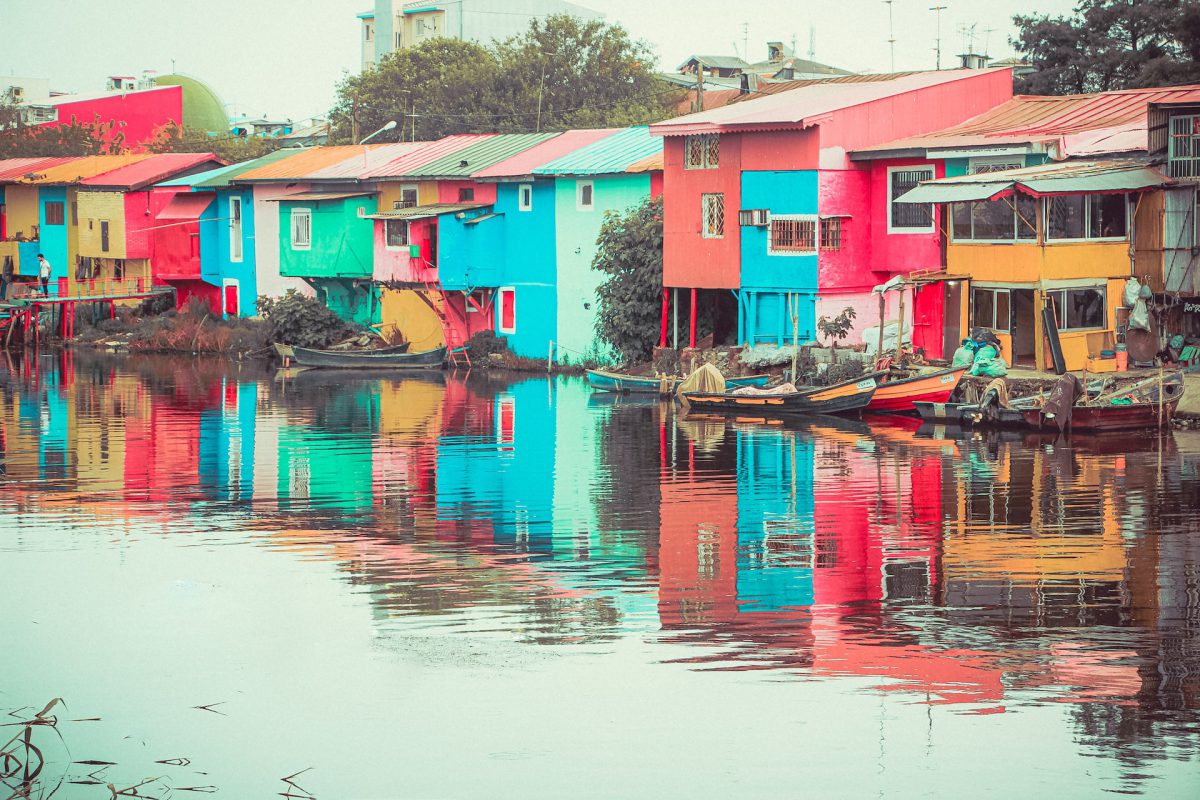
Table of Contents
Nestled along the Caspian coast in Gilan province, Anzali Lagoon is a coastal wetland of remarkable beauty. Its connection to the Caspian Sea is facilitated by a ship channel, carefully guarded by two sturdy breakwaters. What’s fascinating is the vast territory it commands, with drainage basins spanning an impressive 374,000 hectares.
This natural wonder has earned international recognition, proudly securing its status as a registered international wetland. It stands as a vital habitat for countless bird species, acknowledged and celebrated by global conservation societies. The lagoon, where land and sea converge in harmonious splendor, is not only a local treasure but a cherished gem on the world’s ecological map.
As you explore this hidden treasure in Iran’s north, you’ll not only be treating your senses to a visual feast but also contributing to the preservation of an ecologically significant sanctuary.
Quick Review of Bandar Anzali
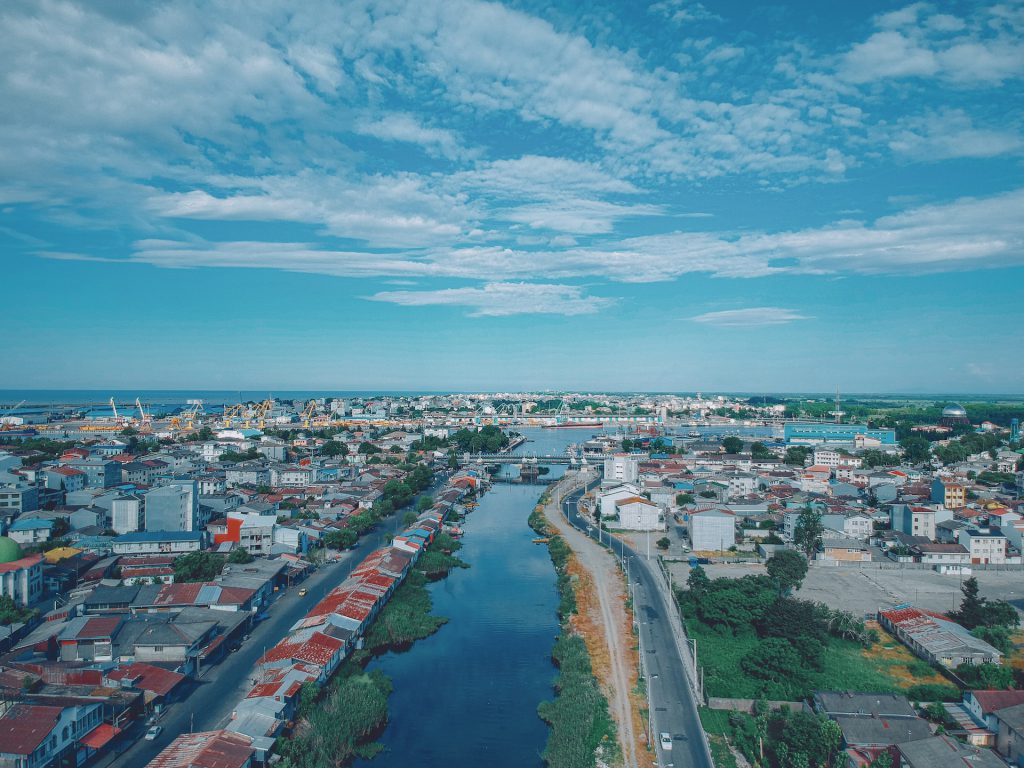
Situated along the Caspian Sea in northern Iran, Bandar Anzali, also known as Anzali Bay, is a captivating port city near Rasht . Known as “Iran’s European North,” it’s full of history and attractions. Bandar Anzali, once named Pahlavi Bay, is a place where you can’t see everything in just one short visit.
20 Best Beaches of Iran: A Journey to Remember
This coastal city, rich in history and beauty, has a lot to offer. From its past to the present, Bandar Anzali is a destination that invites you to take your time exploring. Whether you’re enjoying a leisurely walk along the coast, trying local food, or uncovering hidden treasures, Bandar Anzali promises a memorable adventure.
Bandar Anzali History
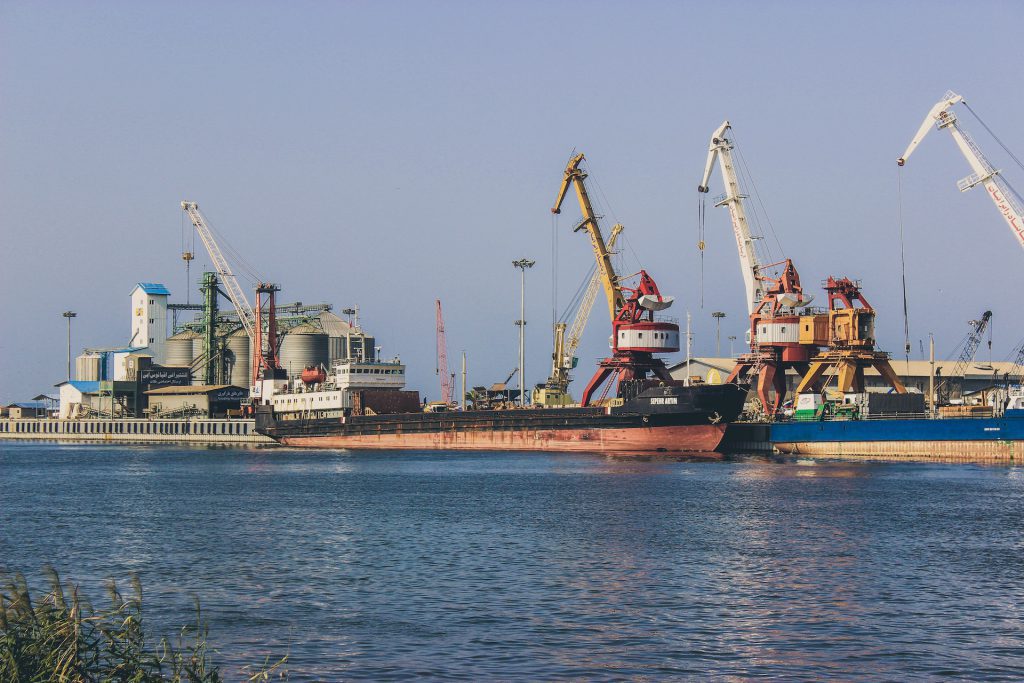
Bandar Anzali, also known as Anzali Port, is among Iran’s oldest and busiest towns. Its name has ancient origins, dating back to the time of the Achaemenid Empire when it had global connections.
This place used to be called the “City of Rain” for good reason; it still gets a lot of rain, especially in spring. The humid climate here is perfect for growing rice.
What’s unique about Bandar Anzali is that it has a history dating back to the rule of Nader Shah Afshar, a famous monarch. He initiated the construction of Iran’s first-ever ship, now known as the Navy Army. This ship outshone even Russian ones. To make this happen, he brought in John Elton, a well-known Englishman, to set up a ship factory in the city.
Where Is the Anzali Lagoon?
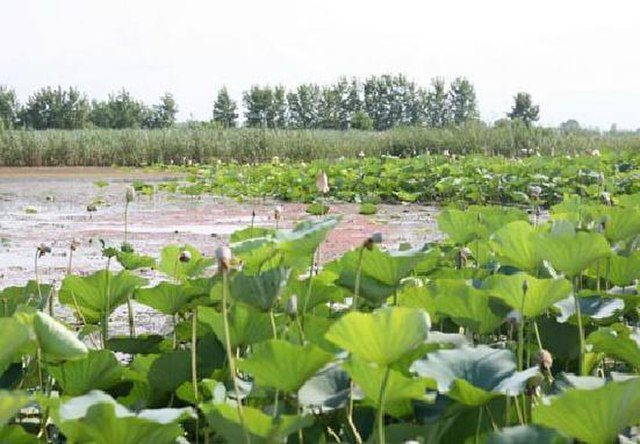
Anzali Lagoon, found in the southwest of Bandar Anzali near the Caspian Sea, stands as Iran’s biggest home for wildlife. During spring, the water in the lagoon is about 2.5 meters deep, changing depending on rainfall and dry spells. What makes this lagoon special is where it’s located, getting a lot of rain and moisture. This unique place supports a lively environment with various plants and birds, making it a must-see for nature lovers.
Anzali Lagoon History
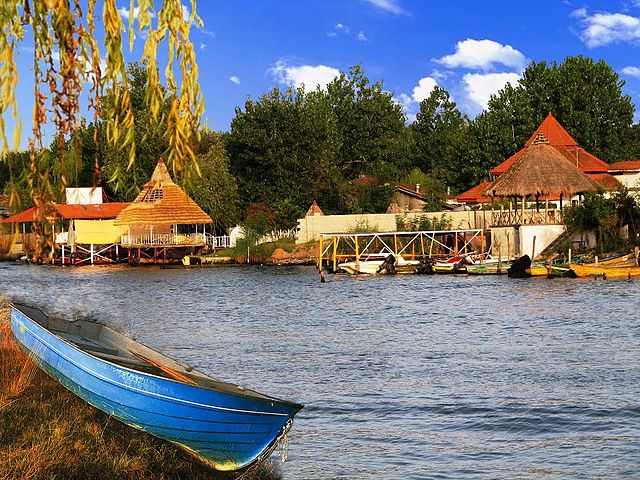
An intriguing puzzle surrounds the name “Anzali.” Some suggest it might have roots in “Hamzali,” signifying the constant interaction between water and land, as if nature itself were scrubbing their boundaries. Interestingly, Greek offers us two related words, “Anzalus” and “Anzalia,” which were once synonyms for “march.”
This isn’t just a wild theory; the lagoon’s history dates back an astounding fifteen thousand years. The etymology of its name hints at the ancient dance between land and water, a story as rich and enduring as the lagoon itself.
Anzali Lagoon Facts
Bandar Anzali Lagoon is a true marvel of nature, renowned for its unique features and vibrant biodiversity. Here are two important facts about it.
A Natural Oasis
The lagoon, situated in northern Iran, is a natural gem divided into four distinct sections: east, west (Abkenar), center (Selkeh), and the enigmatic Siah Keshim, named after the Black-necked grebe bird species that calls this sanctuary home. This unique wetland relies on an intricate network of eleven rivers and thirty tributaries for its freshwater infusion, while in its western expanse, depths plunge to over two meters.
Ecological Wonders
The lagoon’s ecosystem is a true marvel, shaped by its unique bed and natural flow. Amidst its tranquil waters, the Indian lotus, also known as the sacred lotus (Nelumbo Nucifera), reigns supreme, boasting global recognition. The aquatic plants in the lagoon can be categorized into four groups: emergent, floating-leaved, submerged, and free-floating, each playing a vital role in the rich tapestry of life that thrives beneath the surface. Explore the lagoon, where every corner reveals a new wonder of nature.
Touristic Activities of Anzali Lagoon
Anzali Lagoon is a treasure trove of enchanting attractions and natural spectacles, from boating amidst tulip splendor to diverse water adventures, birdwatching in paradise, thrilling kayaking, and tranquil fishing. This lagoon promises a myriad of unforgettable experiences.
Boating and Tulip Watching
The lagoon, in northern Iran, offers unforgettable experiences. Visit during early to late summer when tulip flowers adorn the landscape, turning it into a colorful wonderland. Rent a boat to explore and don’t forget your camera for stunning photos.
Diverse Water Adventures
Discover this lagoon on regular boats, equipped or VIP ones, or even sea buses. Over 30 authorized cooperatives rent boats, starting at 100,000 Tomans. Avoid unregistered boats for a safer experience. These diverse boat options cater to various preferences and budgets, ensuring that everyone can experience the lagoon’s tranquil beauty while enjoying a smooth and secure ride across its waters.
Birdwatching Haven
The lagoon attracts migratory birds from the north, making it a top spot for birdwatchers. Enjoy the sights of herons, ducks, eagles, and more. Take a boat ride for the best views. The lagoon’s rich birdlife offers endless fascination, providing hours of birdwatching pleasure.
Kayaking Fun
Kayaking offers excitement along the lagoon’s edges. Glide along the lagoon’s tranquil surface in a kayak, experiencing the thrill of solo water exploration while taking in the breathtaking surroundings. With affordable rental rates, it’s a perfect opportunity for adventure seekers.
Peaceful Fishing
Fishing is popular here, but bring your gear as rentals aren’t available. Follow local advice and respect fishing seasons for a great experience. Immerse yourself in the tranquility of the lagoon as you engage in the age-old practice of fishing. To protect the local wildlife, ensure you’re well-informed about the appropriate fishing seasons and practices for a rewarding and responsible angling experience.
Anzali Wetland: Nature’s Haven
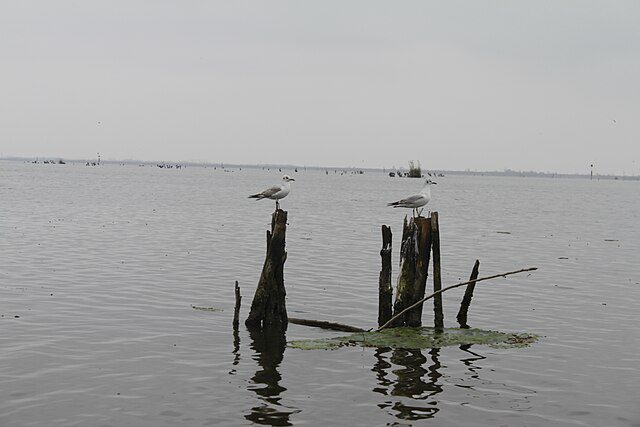
Rich Plant Life
The lagoon’s lush flora includes water lilies, lotuses, and various flowers, thriving in the moist marsh soil. These water-loving plants have found a flourishing home in the lagoon’s marshy surroundings, creating a vibrant and picturesque landscape for visitors to enjoy.
Bird Paradise
The lagoon hosts diverse bird species like herons and swans, making it a birdwatcher’s delight. With its abundance of avian residents, the lagoon offers birdwatchers the opportunity to witness these magnificent creatures in their natural habitat, providing a truly captivating and educational experience.
Diverse Wildlife
The lagoon also houses turtles, frogs, snakes, and more, creating a vibrant ecosystem. This rich tapestry of wildlife, from amphibians to reptiles, adds to the lagoon’s unique charm, offering a haven for both nature enthusiasts and those eager to explore the wonders of the animal kingdom.
Iran Wildlife: Discovering the Best of Iran Nature
FAQs about Anzali Lagoon
Q1: where is anzali lagoon located.
A1: Anzali Lagoon is situated in the southwest of Bandar Anzali near the Caspian Sea in Iran.
Q2: What is the history of Anzali Lagoon?
A2: Anzali Lagoon’s history dates back approximately fifteen thousand years, with its name possibly derived from ancient Greek words related to the interaction between land and water.
Q3: What are some key facts about Anzali Lagoon?
A3: Two important facts about Anzali Lagoon include its division into four distinct sections, each with unique features, and its rich biodiversity, including the presence of the Indian lotus.
Q4: What tourist activities are available at Anzali Lagoon?
A4: Tourists can enjoy activities such as boating, birdwatching, kayaking, and fishing at Anzali Lagoon. Additionally, visiting during the tulip season offers a colorful and picturesque experience.
Q5: What wildlife can be found at Anzali Lagoon?
A5: Anzali Lagoon is home to diverse wildlife, including water lilies, lotuses, various bird species like herons and swans, as well as other animals such as turtles, frogs, and snakes, contributing to its unique ecosystem.
Discover the Beauty of Anzali Lagoon with Customized Iran Tours
If you’re yearning to explore the enchanting wonders of Anzali Lagoon in Iran, embarking on a customized tour is the key to making your journey truly unforgettable. At To Iran Tour, we understand that every traveler is different, and that’s why we specialize in crafting personalized Iran tours and travel packages.
We are dedicated to curating exceptional experiences that align with your interests and preferences. Our team of professional tour guides and travel experts are well-versed in the intricacies of Iran’s diverse landscapes, cultures, and traditions, ensuring that your journey is both enriching and seamless.
At To Iran Tour, we’re not just about providing tours; we’re here to help you create unforgettable memories in Iran. Let us be your guides on this incredible adventure through Iran, and together, we’ll unlock the beauty and wonder of this remarkable country.
Explore All Unforgettable Tours of Rasht and Northern Iran
Leave a reply cancel reply.
Your email address will not be published. Required fields are marked *
Save my name, email, and website in this browser for the next time I comment.
Free Iran Travel Consultation
Let us know whatever you need for your trip, and we assist in arranging everything needed
Recent Posts
- Eynali Mountain, Tabriz: Nature, Culture, and Adventure
- Behnam House: Rich Cultural Heritage in Tabriz
- Taxi Iran: A Comprehensive Guide to Transportation
- Constitution House of Tabriz: Preserving Heritage
- Greek Ship: Lasting Impression on Kish Island
Discover the most outstanding articles on all topics of life. Write your stories and share them
- Iran Visa Policy
- Apply for Iran visa
- Active Style
- Inside Style
- Discovery Style
- In-Depth Style
- Knowledge Based Style
- Daily Tours
- Why “To Iran Tour”?
- Partnership with To Iran Tour
Find Your Account

- Iran Information
- Travel Plans
The Caspian Sea: A Jewel of the Eurasian Continent and Its Historical Significance
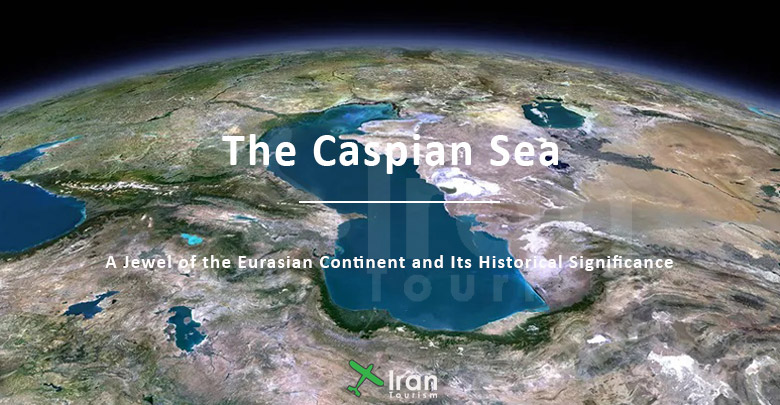
The Caspian Sea, with its mesmerizing beauty, is renowned for its remarkable diversity and distinct characteristics. It stands apart from typical saltwater seas due to its varying salinity levels, with the northern regions exhibiting higher salinity than the southern parts. This peculiar feature has given rise to a fascinating array of marine life, including endemic species that have adapted to thrive in this diverse ecosystem. Moreover, the Caspian Sea’s waters hold great importance for the sturgeon, a species that produces the renowned and highly sought-after delicacy known as caviar. However, alongside its ecological wonders, the Caspian Sea faces environmental challenges such as pollution, overfishing, and habitat degradation, necessitating concerted efforts to safeguard its fragile balance and preserve its natural wonders for future generations.
Beyond its natural splendor, the Caspian Sea boasts a rich historical tapestry that intertwines with the destinies of neighboring civilizations. It has been a pivotal trade route, connecting Europe and Asia and facilitating cultural exchange along the ancient Silk Road. The port cities that dot its shores, steeped in history and heritage, bear witness to the vibrant crossroads of diverse civilizations. Additionally, the Caspian Sea’s energy resources, including substantial oil and natural gas reserves, have endowed it with immense geopolitical significance. The exploration and utilization of these resources have shaped diplomatic negotiations and complex power dynamics among the countries bordering the sea. Thus, the Caspian Sea encapsulates natural beauty, historical significance, and the intricate interplay between energy geopolitics and regional cooperation.
Geographical Location and Size of the Caspian Sea
The Caspian Sea, located in the heart of Eurasia, is prominent on the world map as the largest enclosed body of water. Situated between Europe and Asia, this remarkable waterway spans an expansive area, covering approximately 371,000 square kilometers (143,000 square miles). Its strategic location makes it a vital link between regions and influences its diverse geopolitical dynamics.
Geographically, the Caspian Sea is bordered by five countries: Russia to the north, Kazakhstan to the northeast, Turkmenistan to the east, Iran to the south, and Azerbaijan to the west. These nations each have their respective coastlines along the Caspian Sea, with Russia occupying the largest portion. The sea is not connected to any oceans, and its waters are landlocked, giving it the characteristics of a lake rather than a traditional saltwater sea.
The Caspian Sea’s size and depth contribute to its significance globally. Its maximum depth reaches around 1,025 meters (3,363 feet), making it one of the world’s deepest lakes. Moreover, its volume of water is substantial, estimated to be approximately 78,200 cubic kilometers (18,800 cubic miles). The sea’s coastline stretches for about 7,000 kilometers (4,350 miles), offering vast potential for various economic activities, including shipping, fishing, and offshore oil and gas exploration.
Understanding the geographical location and immense size of the Caspian Sea provides a foundation for exploring its diverse ecosystems, ecological importance, and historical and geopolitical dynamics that have shaped the region.
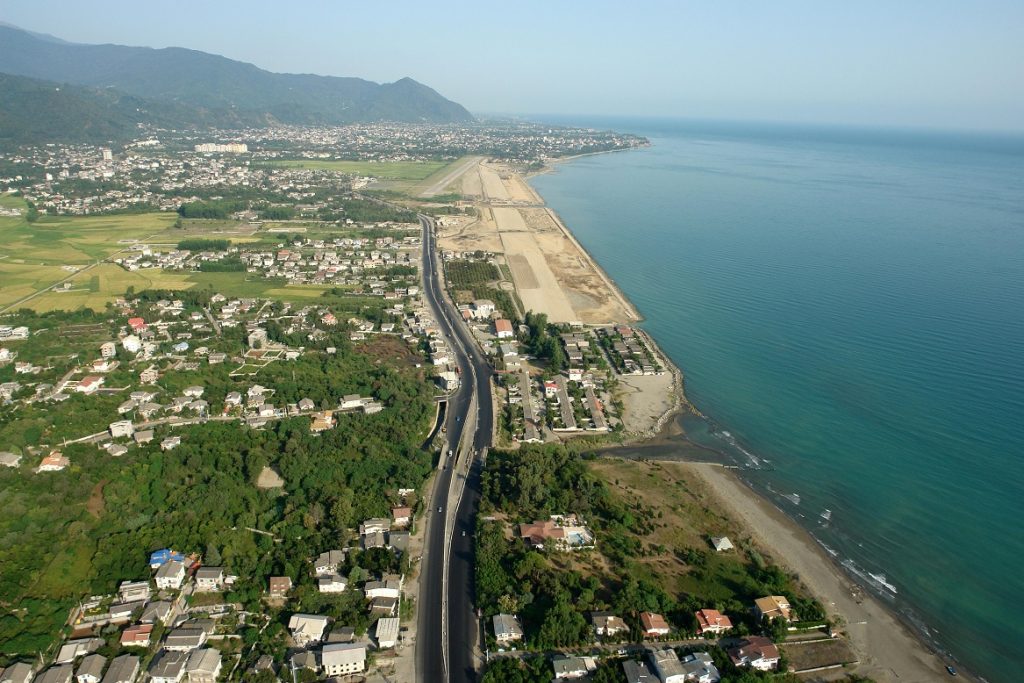
Caspian Sea coast in Ramsar, Iran
Salinity and Marine Life of The Caspian Sea
The Caspian Sea exhibits a unique balance of brackish water with varying salinity levels throughout its vast expanse. The Caspian Sea stands apart from conventional saltwater oceans as a mixohaline body of water, exhibiting distinct salinity variations across its spectrum. The northern part of the sea, influenced by inflowing rivers and freshwater sources, tends to be less saline. At the same time, the southern portion, closer to the open ocean, has higher salinity levels.
The salinity of the Caspian Sea also fluctuates seasonally due to factors such as rainfall, evaporation, and changes in river water inflow. These variations in salinity impact the sea’s unique ecosystem and the diverse marine life that inhabits its waters.
The Caspian Sea is home to a rich array of flora and fauna adapted to the specific environmental conditions of the region. Various species of fish, including sturgeon, herring, and trout, thrive in its waters, providing a vital source of livelihood and supporting local fishing industries. The sea is particularly renowned for its sturgeon population, known for producing sought-after caviar.
However, over the years, the Caspian Sea has faced environmental challenges that have impacted its marine life. Pollution, habitat degradation, and overfishing have posed significant threats to the delicate balance of this ecosystem. Efforts are being made to address these issues and promote sustainable fishing practices to protect the biodiversity of the Caspian Sea.
Understanding the salinity levels and the unique marine life of the Caspian Sea highlights the importance of conservation and sustainable management to ensure the long-term health and viability of this remarkable body of water and its diverse ecosystem.
The Caspian Sea Environmental Challenges
The Caspian Sea faces several environmental challenges that threaten its delicate ecosystem. One of the main concerns is pollution resulting from industrial activities, oil spills, and agricultural runoff. These pollutants adversely affect the water quality and marine life, leading to habitat degradation and the decline of certain species.
Another significant challenge is the invasive species that have entered the Caspian Sea, disrupting the native biodiversity and ecological balance. Introducing non-native species, such as comb jellyfish and zebra mussels, has had detrimental effects on the native flora and fauna.
Furthermore, the Caspian Sea is experiencing water level fluctuations, which have been attributed to climate change. Rising sea levels, coastal erosion, and increased frequency of extreme weather events threaten coastal communities and their infrastructure.
Efforts are being made to address these challenges and protect the Caspian Sea’s unique environment. International collaborations, conservation initiatives, and implementing sustainable practices are crucial for the long-term preservation of this valuable ecosystem.
Historical Significance of the Caspian Sea
The Caspian Sea holds great historical significance, being an important region that has witnessed the rise and fall of civilizations throughout the centuries. It has been a crucial hub for trade, cultural exchange, and geopolitical interactions.
Dating back to ancient times, the Caspian Sea played a vital role in the trading networks of the Silk Road, connecting civilizations in the East and the West. Its strategic location made it a gateway for exchanging goods, ideas, and knowledge between regions.
The Caspian Sea has also been a site of significant historical events and conflicts. Various empires, including the Persian Empire, the Mongols, and the Russian Empire, sought to control and dominate the region due to its economic and political importance. The Caspian Sea has witnessed numerous battles, conquests, and shifts in power throughout history.
In addition to its historical importance, the Caspian Sea is associated with a rich cultural heritage. The diverse ethnic groups inhabiting its surrounding regions have contributed to the cultural tapestry of the area, resulting in a unique blend of traditions, languages, and customs.
Today, the Caspian Sea is strategically important due to its vast energy resources, particularly oil and gas. The exploration and extraction of these resources have shaped the modern geopolitical dynamics of the region.
Beneath the Caspian Sea’s surface lie extensive oil and natural gas reserves, making it a critical player in global energy markets. Exploiting and exploiting these resources have created complex geopolitical dynamics and disputes among neighboring countries. Resolving these issues necessitates diplomatic negotiations and cooperative efforts to ensure the sustainable utilization of this invaluable natural asset.
What countries are exploiting the Caspian Sea?
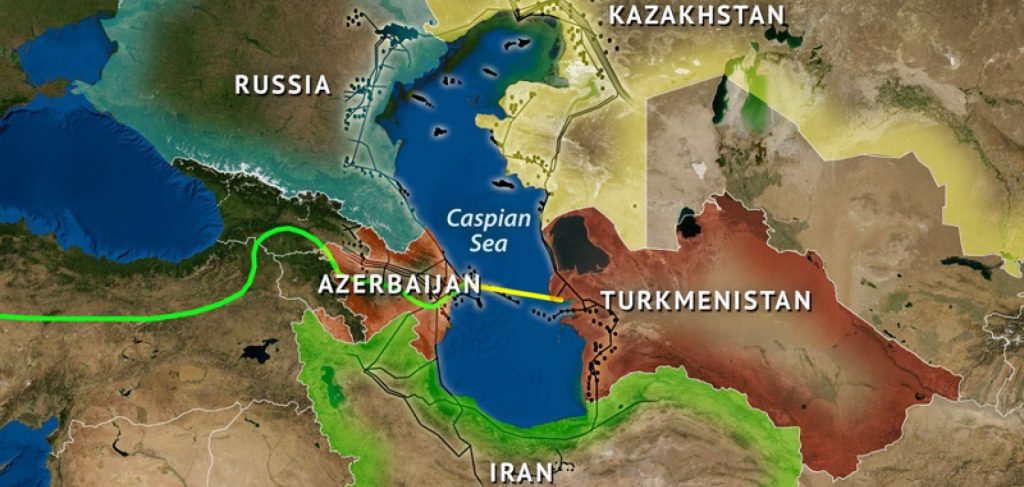
Which countries are exploiting the Caspian Sea?
Several countries surrounding its shores are exploiting the Caspian Sea, each with its interests and activities. The countries involved in the exploitation of the Caspian Sea include:
- Russia: As the largest country bordering the Caspian Sea, Russia plays a significant role in its exploitation. It has extensive oil and gas exploration and production operations in the Russian sea sector. Russia has the largest share of the Caspian Sea, accounting for approximately 21% of its total area.
- Kazakhstan: Like Azerbaijan, Kazakhstan has significant oil and gas reserves in its section of the Caspian Sea. The country has been actively engaged in exploration and production activities, aiming to harness its energy resources for economic development. Kazakhstan holds around 15% of the Caspian Sea’s area, making it the second-largest stakeholder in the region.
- Azerbaijan: With its substantial offshore oil and gas reserves, Azerbaijan has been actively developing energy resources in the Caspian Sea. It has established major oil and gas fields, contributing to economic growth and energy exports. Azerbaijan holds around 11% of the Caspian Sea’s area, securing a notable portion of the sea for its maritime activities.
- Turkmenistan is another country with notable hydrocarbon reserves in the Caspian Sea. It has been involved in offshore drilling operations to tap into its oil and gas potential. Turkmenistan possesses approximately 13% of the Caspian Sea’s area, giving it a significant portion of the sea.
- Iran: Iran also shares a coastline with the Caspian Sea and has its energy exploration efforts in the region. It has explored and exploited oil and gas reserves in its sea sector. Iran has a share of approximately 11% of the Caspian Sea, making it one of the key countries with access to its waters.
These countries have been engaged in bilateral and multilateral agreements to address issues related to resource exploration, territorial disputes, and environmental concerns in the Caspian Sea. Exploiting the sea’s resources has significant economic implications for these countries, contributing to their energy sectors and overall development.
The Caspian Sea is a remarkable testament to nature’s power and our world’s interconnectedness. Its unique characteristics, diverse ecosystems, and historical significance make it an awe-inspiring destination for adventure seekers and those interested in comprehending the intricate fabric of our planet. By appreciating and safeguarding this majestic body of water, we can ensure its preservation for future generations.
Iran lakes and seas
cities on the caspian sea
Previous Persian Poets: A Kaleidoscope of Emotion, Culture, and Artistry
Next the cultural traditions of iran, related posts.
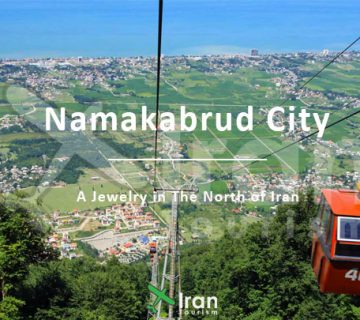
Namakabrud City, a jewelry in the north of Iran!
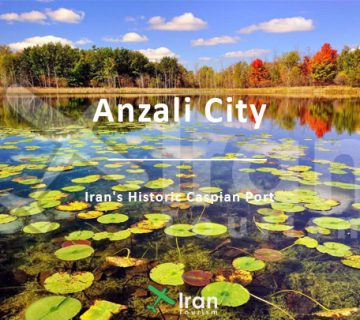
Anzali City: Iran’s Historic Caspian Port
Leave a reply cancel reply.
Your email address will not be published. Required fields are marked *
Save my name, email, and website in this browser for the next time I comment.

- Caspian Sea North Iran Coast
- adventure trip
- Iran Nature
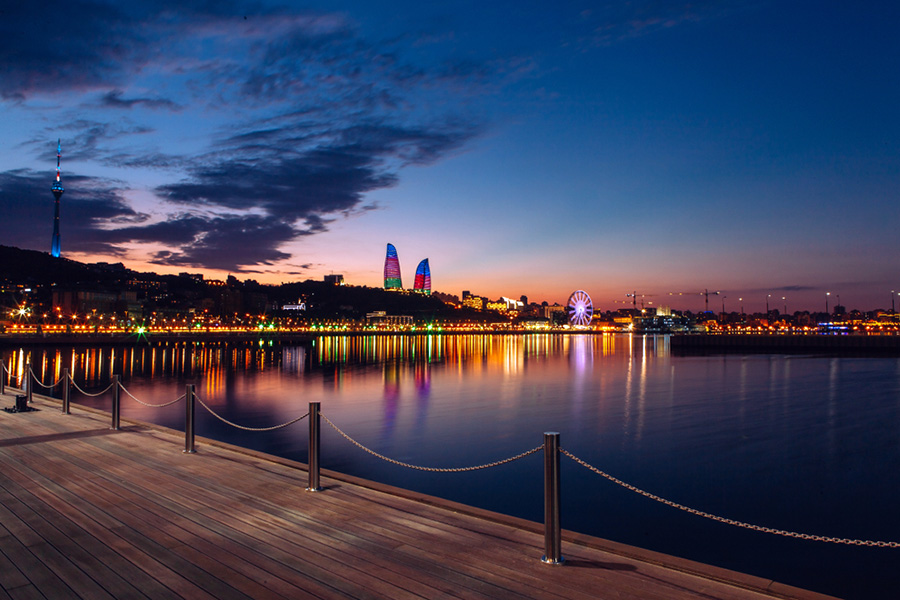
- May 21, 2021 12:30 pm
khazar Sea Shipping Lines Tracking
In the past, Caspian Sea was part of the Tethys Sea , which connected the Pacific Ocean with Atlantic Ocean. From 60 million years ago, Caspian Sea was gradually closed with the Pacific and Atlantic Oceans. It is a term used in Western and Hebrew to refer to the northern sea of Iran. The Caspians were a white ethnic group that lived in this region from the second millennium BC to the Sassanid period .
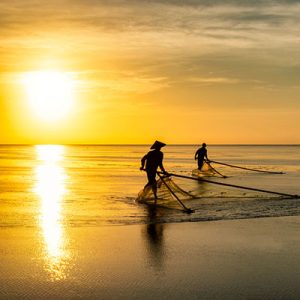
Caspian Sea coast Iran
Khazar sea and jungle is the largest lake on earth that has favorable environmental conditions creating beautiful natural and tourist landscapes. It includes the coasts of Golestan , Mazandaran and Gilan provinces that contain many natural tourist attractions. The Mountains , forests, wetlands, parks, wildlife and sandy beaches make beautiful and pleasant landscapes. It’s good to know that the main reason of these tourist attractions and even civilization of this land is Khazar Sea .
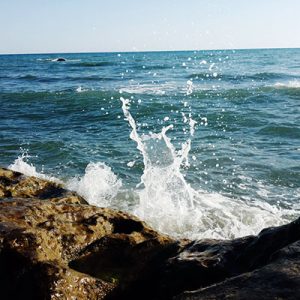
Maritime Tourism of Caspian Sea
Anzali Port is one of the worth seeing cities on your trip to north of Iran. It is the largest port in Iran on the southern coast of Caspian Sea, where have the most rain in Iran. Anzali Wetland is in the southwest of Caspian Sea, about 40 km from the center of Gilan Province . This wetland is neighbor with Soomehsara to the south, Pir Bazaar to the east, Anzali city to the north and Kapurchal- Abkenar to the west. Everywhere in the lagoon you can see beautiful water lilies dancing with the waves of the water. In the corners of Anzali lagoon, reeds and sea tulips make for a striking sight.
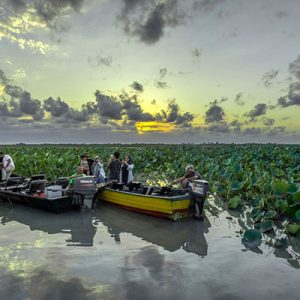
The Peninsula of Miankaleh Anzali Lagoon
Miankaleh Peninsula is on the southeastern tip of Caspian Sea, twelve kilometers north of the city of Behshahr. It is a protected area since 1348 AH, which is currently of Wildlife Sanctuary , International Wetland and Biosphere Reserve. Good to know that, there is no shark in this sea, the water of this sea is semi-saline and this fish lives only in salt water.
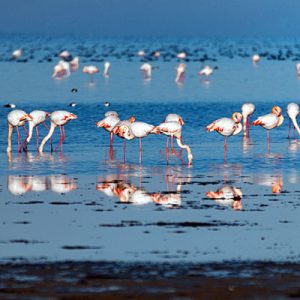
Mirza Kuchak Khan cruise ship of Khazar
Mirza Kuchak Khan cruise ship, built in 1971 in Japan, has 5 floors with a capacity of about 250 passengers. This ship, which can travel between coastal and foreign provinces, is one of the tourist attractions of Anzali port. The accommodation is a 4-star hotel, that welcomes guests who are eager to experience an unforgettable night in Caspian Sea.
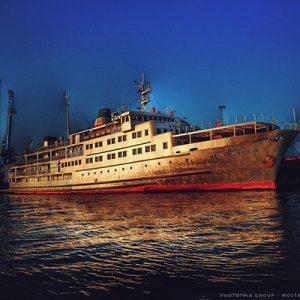
Astara Oyster Beach North Iran
Astara is one of the most beautiful and touristic cities in Iran. It is interesting to know that this city has one of the best beaches in Caspian Sea, north Iran. Oyster Beach is a high-security beach for swimming and recreation, and a space for a relaxing pastime. This beach, which is 7 km from Astara Road towards Talesh .
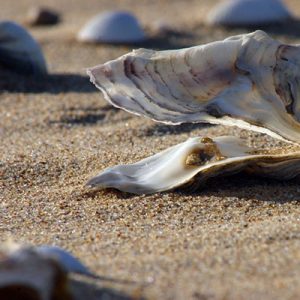
Experience Iran Nature via Caspian Sea
Caspian Sea beaches are among the most favorable areas for the development of tourism industry. This area, specially for summer tourism, is highly attractive due to its favorable natural and climatic factors. So that every year attracts more than 25 million Iranians and enthusiasts of recreational tourism.
How can I apply for Iran Tourist Visa , book an Eco-lodge or hotel and travel to Anzali port of Caspian Sea Coast Iran? Is it possible to travel to Iran with my own vehicle or use public transportation ? Traveling Iran will bring you unforgettable moments from natural attractions to historical and cultural sights. By and large, this best Iranian Travel Agency would like to lead and offer you amazing Iran tours which you are interested in.
Leave a comment Cancel reply
Save my name, email, and website in this browser for the next time I comment.
Select User Type
Enter the e-mail address associated with the account. We'll e-mail a link to reset your password.
Caspian Sea: Problems and Prospects
- Conference paper
- First Online: 01 January 2011
- Cite this conference paper

- Anar Mansurov 2
Part of the book series: NATO Science for Peace and Security Series C: Environmental Security ((NAPSC))
615 Accesses
1 Citations
3 Altmetric
The Caspian Sea is one of the most unique and fragile ecosystems in the world. Having been affected by centuries of human activities including fishing, management of the feeder rivers and hydrocarbons extraction, it currently suffers significant environmental pollution and deterioration. The main aspects of the current environmental problems in the region are attributed to severe oil and heavy metals pollution, decrease in biodiversity, flooding and water level fluctuations. Urgent measures need to be taken immediately by all littoral states to end the current degradation of the Caspian Sea and to rehabilitate its flora and fauna.
This is a preview of subscription content, log in via an institution to check access.
Access this chapter
Subscribe and save.
- Get 10 units per month
- Download Article/Chapter or eBook
- 1 Unit = 1 Article or 1 Chapter
- Cancel anytime
- Available as PDF
- Read on any device
- Instant download
- Own it forever
- Available as EPUB and PDF
- Compact, lightweight edition
- Dispatched in 3 to 5 business days
- Free shipping worldwide - see info
- Durable hardcover edition
Tax calculation will be finalised at checkout
Purchases are for personal use only
Institutional subscriptions
Similar content being viewed by others

The Caspian Sea and Kara-Bogaz-Gol Bay

The Present State of the South Aral Sea Area

Ecosystems of the Barents Sea Region
Blacksmith Institute (2007) Annual report 2007. Blacksmith Institute, New York
Google Scholar
Caspian Environment Program (2002) Transboundary diagnostic analysis for the Caspian Sea. CEP, Baku
Caspian Environment Program (2003) Pollution abatement and monitoring database for the Caspian Sea. http://www.caspianenvironment.org/report_miscell4.htm . Accessed 10 Mar 2009
Caspian Scientific Research Institute of Fisheries (1999) Socialno-ekonomicheskiy obzor ribnogo hozaystva Kaspiyskogo basseyna (Socio-economic review of fisheries in the Caspian basin). CSRIF, Astrakhan
Kalff J (2002) Limnology. Prentice-Hall, Inc, Upper Saddle River
Mirovitskaya N, Ascher W (2000) The Caspian Sea – a quest for environmental security. Kluwer Academic Publishers, Dordrecht
United Nations Environment Programme (2002) Caucasus environment outlook. New Media, Tbilisi
Download references
Author information
Authors and affiliations.
Institute of Cybernetics, Azerbaijan National Academy of Science, 24A Matbuat pr-ti, m 48, AZ 1073, Baku, Azerbaijan
Anar Mansurov
You can also search for this author in PubMed Google Scholar
Corresponding author
Correspondence to Anar Mansurov .
Editor information
Editors and affiliations.
, Modelling Laboratory, Central European University, Nador ut. 9, Budapest, 1051, Hungary
Viktor Lagutov
Rights and permissions
Reprints and permissions
Copyright information
© 2012 Springer Science+Business Media B.V.
About this paper
Cite this paper.
Mansurov, A. (2012). Caspian Sea: Problems and Prospects. In: Lagutov, V. (eds) Environmental Security in Watersheds: The Sea of Azov. NATO Science for Peace and Security Series C: Environmental Security. Springer, Dordrecht. https://doi.org/10.1007/978-94-007-2460-0_12
Download citation
DOI : https://doi.org/10.1007/978-94-007-2460-0_12
Published : 21 September 2011
Publisher Name : Springer, Dordrecht
Print ISBN : 978-94-007-2459-4
Online ISBN : 978-94-007-2460-0
eBook Packages : Earth and Environmental Science Earth and Environmental Science (R0)
Share this paper
Anyone you share the following link with will be able to read this content:
Sorry, a shareable link is not currently available for this article.
Provided by the Springer Nature SharedIt content-sharing initiative
- Publish with us
Policies and ethics
- Find a journal
- Track your research

IMAGES
VIDEO
COMMENTS
Discover the sandy Caspian beaches around Baku, where you can enjoy water sports, romantic afternoons and lively evening parties. Learn how to kitesurf, windsurf or relax at less crowded beaches such as Bilgah, Mardakan, Pirshagi, Nardaran and Zagulba.
A decades-long legal dispute over the status of the Caspian Sea is finally resolved, meaning Azerbaijan, Russia, Iran, Kazakhstan and Turkmenistan will soon be open to luxury cruise trips.
Ideal visit duration: 2-3 days. Caspian Sea Beaches in Aktau, Kazakhstan, offer a unique seaside experience on the world's largest inland body of water. Aktau, meaning 'white mountain,' is distinguished by its cliffs and shorelines composed of moon-like landscapes. These beaches are an enthralling escape, presenting a mix of desert and aquatic ...
The Caspian Sea is the world's largest inland body of water, lying between Europe and Asia. It has a rich biodiversity, a caviar and oil industry, and a history of ancient civilizations and conflicts.
The vast Caspian sea, though sometimes classed as a lake, is the largest landlocked body of water in the world. The gateway between Europe and Asia, it is bordered by Iran to the south, Azerbaijan and Russia to the west and Turkmenistan to the east, while Kazakhstan's Mangystau region lies to the northeast. Nature abounds here and many visitors ...
Learn how to travel on the Caspian Sea Ferry between Central Asian countries, including Turkmenistan, Azerbaijan, Kazakhstan and Russia. Find out the prices, schedules, customs, and alternatives for this unique and adventurous mode of transport.
The Caspian Sea is a colossal body of water that displays several unique characteristics. It extends across a vast surface area of 143,000 square miles (371,000 sq km) making the Caspian Sea the world's largest inland body of water. Plummeting to impressive depths of up to 1,025 meters (3,363 feet), the sea's basin reaches remarkable lows.
Popular activities on the Caspian Sea include boat cruises, diving opportunities, and fishing. 8. Shirvan National Park Source: Vastram / shutterstock Shirvan National Park. Shirvan National Park, formally established as a protected area in 2003, used to be located under the Caspian Sea, and now spans over 54,000 hectares to the south of Baku.
Mohammadabad Beach. Another picturesque city in the beautiful province of Mazandaran, hosting some of the best Caspian Sea beaches. The distinct feature of this beach is its narrow width, offering a different experience than other northern Iran beaches. It has ample tourist facilities, so be sure to visit.
Explore the Iranian Caspian Sea region, a destination of unique charm and cultural significance. Discover its diverse marine life, scenic beaches, and luxurious resorts along the world's largest enclosed body of water.
Caspian Sea attractions include Caspian Port, a developing port located on the Caspian Sea's coastal waters, featuring 25 wharf posts. The largest and most comprehensive passenger and terminal post collection in northern Iran is situated on the shores of Gilan's cities like Rasht and Chaboksar, within the Anzali Free Trade-Industrial Zone area.
Caspian Sea. Relax and bask in the sun on the Caspian Sea coast and enjoy some of the best activities on the beach. The Caspian Sea is actually a lake, but because of its impressive size and the title of the largest closed reservoir, it is called the sea. The city of Aktau, that is located right on its shore, has beautiful beaches.
Wallstreet Coffee. 11. Italian, Asian. KazanMangal Restaurant. 93. $$ - $$$ • Barbecue, European, Middle Eastern. Russian Caspian Sea Coast Tourism: Tripadvisor has of Russian Caspian Sea Coast Hotels, Attractions, and Restaurants making it your best Russian Caspian Sea Coast resource.
The Abundant Bounty of the Caspian Sea - A Mecca for Marine Life Beyond its breathtaking beauty, the Caspian Sea is teeming with an incredible diversity of marine life in the north of Iran. With over 850 species of marine creatures and more than 500 types of plants , the sea serves as a rich food reservoir, supporting vital fishing industries.
Photographer Chloe Dewe Mathews' newest book, Caspian: The Elements, takes the reader on a meandering journey through oil-rich central Asia following traces of natural elements such as fire, gas ...
Situated along the Caspian Sea in northern Iran, Bandar Anzali, also known as Anzali Bay, is a captivating port city near Rasht. Known as "Iran's European North," it's full of history and attractions. Bandar Anzali, once named Pahlavi Bay, is a place where you can't see everything in just one short visit.
The Caspian Sea, the world's largest inland body of water, is now accessible for luxury cruises after a landmark deal among five countries. Learn about the special status of the Caspian, the attractions of its shores, and the visa requirements for travellers.
Eat. Can't-miss spots to dine, drink, and feast. Russian Caspian Sea Coast Tourism: Tripadvisor has of Russian Caspian Sea Coast Hotels, Attractions, and Restaurants making it your best Russian Caspian Sea Coast resource.
The Caspian Sea, located in the heart of Eurasia, is prominent on the world map as the largest enclosed body of water. Situated between Europe and Asia, this remarkable waterway spans an expansive area, covering approximately 371,000 square kilometers (143,000 square miles).
Anzali Port Caspian Sea coast Iran. Khazar sea and jungle is the largest lake on earth that has favorable environmental conditions creating beautiful natural and tourist landscapes. It includes the coasts of Golestan, Mazandaran and Gilan provinces that contain many natural tourist attractions.The Mountains, forests, wetlands, parks, wildlife and sandy beaches make beautiful and pleasant ...
The Caspian Sea is the world's largest body of inland water with a total surface area of 386,400 km 2 and approximate volume of 78,700 km 3.Salinity of the water in the Caspian is approximately one-third than that of the oceanic water [].Despite the fact that in most of the literature and media it is usually referred to as the "Caspian Sea", from the scientific point of view, it should ...
The tourist attractions and presence of various tribes in the surrounding areas are among the reasons accounting for it. Even today 50 tribes with various dialects reside in the area. ... The Caspian Sea is the world largest lake over 30 million years old. Some day it was connected to the Black Sea and was the residence of the first civilized ...
The incredible new £19bn 'mini Suez canal' being built connecting two major oceans The route will stretch from Saint Petersburg in the north to the Caspian Sea and from there to Tehran and on to ...
Article 1. For the purposes of this Convention, the following terms shall mean: "The Caspian Sea" - the body of water surrounded by the land territories of the Parties and outlined on the 1:750,000‑scale nautical charts of the General Department of Navigation and Oceanography of the Ministry of Defense of the Russian Federation, Saint ...